
- Testimonials
- T’s & C’s

Torres del Paine Catamaran Ferry
Pudeto to paine grande to pudeto.
NOTE: WE DO NOT SELL TICKETS IN ADVANCE – UNLESS YOU BOOK AN ALL-INCLUSIVE W TREK WITH US
WE ARE A LEADING W TREK ITINERARY ARRANGER – PLEASE SEND IN AN EMAIL AND CHECK OUR OFFERS OVER ON OUR W TREK PAGE
Where Does the Catamaran Operate from?
The Torres del Paine catamaran ferry service operates between the Pudeto Jetty, which is more or less in the heart of the Park, beside Pehoe Lake; and Refugio Paine Grande. However, this is NOT the catamaran that operates to see Glacier Grey – so do not be confused by this. THAT catamaran departs from Hotel Grey, way over in the western arm of the Park.
This Torres del Paine catamaran ferry service is used by people who wish to get to, or come back from, the French Valley; and those who may be coming from or going to Refugio Grey.
It is NOT POSSIBLE to make reservations. Passengers must turn up, line up and wait to board.
Length of the Crossing
From departing one end to arriving at the other side, crossing Pehoe Lake, the journey takes 25 minutes. From those waiting at the Pudeto end, there is a small cafeteria where you can buy hot drinks and snacks, as well as some public WC’s.
At the Refugio Paine Grande end, there is the restaurant in the refugio that serves snacks and drinks and, of course, public rest rooms are there too.

Information on Payment and Departure Times
It should be noted that payment for the Torres del Paine catamaran ferry service is required on board, in cash in local Chilean pesos, but during high season they often accept other HARD currencies, for example USD and the Euro. However, if ExperienceChile.Org is handling your travel itinerary WE CAN arrange tickets in advance – but these will not guarantee you space on a specific departure, you will STILL NEED to show up early and wait in line.
Season 2023- 2024 the charge is USD40 or Ch$30.000 approx. PER PERSON, EACH WAY (price given in good faith, but may change from time of publication)
Torres del Paine Catamaran Ferry
Departure time schedule is further below.
Scheduling of the Torres del Paine catamaran ferry service is set at specific times, however, as this is a monopoly service, the owners can, at will, change the frequency of these departures to suit the economic reality associated with income derived from each sailing. In other words, if it looks to them like there will not be much demand in a particular day, they may well cancel a sailing.
Naturally, this does not help when it comes to planning travel itineraries, but it can happen, although not often.
Climate and Weather
Another influence on departure times is the state of the weather. If there is considerable wind the service can be suspended.
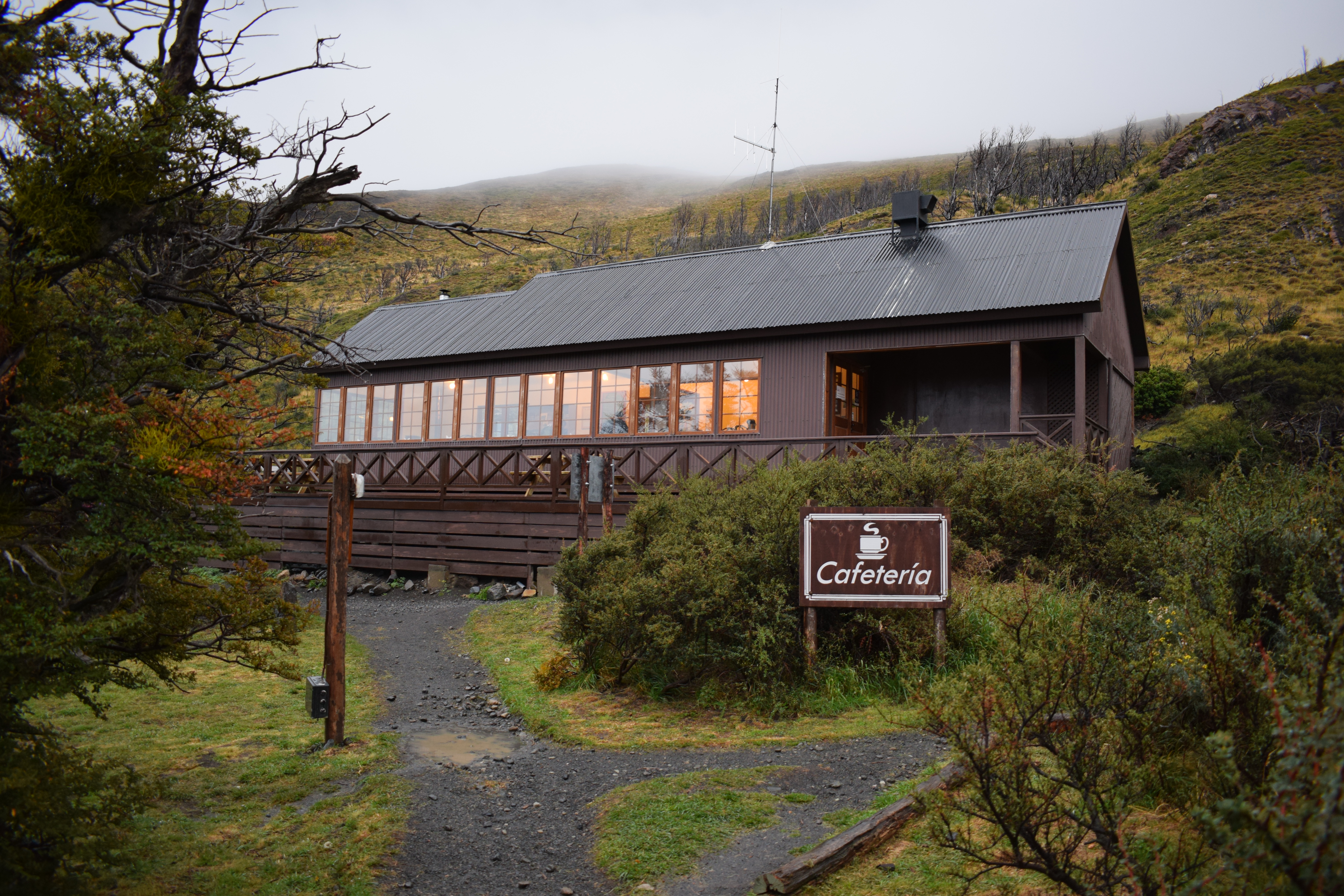
- T&C’s
- Testimonials
- Accomodation
- Chile Travel
> Destinations > Torres del Paine National Park, Chile > Catamaran Service
Catamaran Service
Torres del paine arrivals and transfers.
Torres del Paine is quite simply one of the most amazing geographical wonders of the world. The Park is set in an area of incredible outstanding natural beauty in the heart of Patagonia. It is also a main trekking destination, home to the iconic Torres del Paine W Trek and Circuit trek trails, as well as the stunning Grey Glacier, waterfalls, rivers and lakes.
- GENERAL INFO
- All You Need to Know
- Arrivals, Transfers & Transport
- Park Entrance Points & Cost
- Welcome Centre
- All About the W Trek
- Emergency Rescue
- Distances & Fuel-Filling Stations
- Flora & Fauna
- Climate & Weather
- Places of Interest
- Clothes to Wear
- Trekking Map
- ACCOMMODATION
- Luxury Lodges
- Estancia Hotels
- Featured Accommodation
- Premium Hotels
- Hotel Location Map
- ITINERARIES
- Itineraries
- Itineraries2
- Itineraries3
- Activities2
- Activities3
Torres del Paine Catamaran Service

Operated Between Pudeto Jetty and Refugio Paine Grande Across Pehoe Lake
This service is subject to local weather conditions and can be delayed or cancelled. Most importantly, reservations are NOT taken in advance. Therefore, you need to organise your crossing directly at Pudeto or Refugio Paine Grande, for the 25-minute navigation.
You need to pay in cash in Chilean Pesos even though prices below are shown in USD, but in high season they accept other currencies too (established hard currencies like Euro and USD).
Prices - Season 2020 - 2021
The one-way fare is approx USD35 per person
Catamaran is operated by
Hielos Patagonias Tel: (+56) - (61) - 241 - 133 - Arrieros 1517 Puerto Natales
Enquire today

CUSTOM MADE TRAVEL EXPERIENCES
We are distinguished partners with the Australis, Skorpios and Navimag ship companies. In each case we offer accommodation on board their vessels as stand-alone reservations or as part of your wider travel itinerary. Each ship offers the opportunity to experience Patagonia from the sea and see exactly what the pioneer sailors saw when they ventured upon these parts hundreds of year ago: pristine forests, snow-covered mountains, fiords, glaciers, marine fauna and uninhabited islands.
Book today with confidence >
SOME OF OUR TESTIMONIALS
“ All in all one of the best holidays we have ever had, if not the best, so thank you for putting together such an enjoyable itinerary for us.
With best wishes for the new year. ”
READ FULL TESTIMONIAL >
“Our 60th birthday trip has been so amazing because of your fantastic help. We both turned 60 years old in 2018 so we wanted to celebrate by proving to ourselves we were still fit enough to do this kind of trip.
Your help made this easy, so THANK YOU!!!!!!”
Randy and E
“We are getting ready to leave and I just wanted to thank you for helping us along the way. We had a great time and the weather was perfect. On the “O circuit” all your arrangements went smoothly.“
VIEW MORE TORRES DEL PAINE TESTIMONIALS >
FEATURED HOTELS

Our featured hotels and suppliers have been selected by us for one or more of their attributes such as: location, views, surroundings, comfort, professional service, “uniqueness”, food and / or overall good feeling that one gets from being there.
VIEW ALL FEATURED HOTELS >
MEET EXPERIENCECHILE.ORG DIRECTOR, CHARLES HALLIFAX
Our philosophy is to offer you an experience. Not just a holiday, not just a travel plan, but a life experience. We do this by creating travel itineraries that incorporate destinations, hotels and services that are special, that we know will offer you a memorable travel memory.
READ MORE >
SEND US YOUR ENQUIRY
Please supply us with as much information as you can about where you want to go, what you want to do, what you want to experience and how much money you want to spend (or do not want to spend!). How many people, what type of beds (matrimonial, twin, single etc.)
VIP – if you are a VIP in any of the fields such as celebrity and / or political and / or business, and you need “special attention” such as privacy and / or security for your trip, please use an alias in the enquiry, but mention that you are VIP and one of the directors will handle your request and keep your real name and details confidential.
" * " indicates required fields
WE ARE PROUD MEMBERS OF

Flexibilidad de reprogramación y anulación en todos nuestros tours y programas
¡Escríbenos!

How to Hike the ‘O’ Circuit in Torres del Paine, Patagonia

Where : Torres del Paine National Park Distance : 76 miles | 123 km Days to Complete : 6-11 Difficulty : Strenuous Best Time to Hike : December-March Typical Weather : High wind, rain
Permit : Proof of reservations required Park Fee: 21,000 CLP/$31 US Hiker Traffic : Moderate-Heavy Resupply Options : Only on ‘W’ side Huts/Cabins/Hotels : Yes Cell Service : Spotty
I’d heard rave reviews about the stunning beauty of Torres del Paine’s ‘O’ Circuit, but I wasn’t prepared for it to take me to a transcendent new world.
Towering granite spires, sprawling glaciers, breathtaking mountain passes, intense and ever-changing weather — I experienced it all on every step of my six-day journey. Trekking Patagonia’s ‘O’ Circuit had exposed me to a completely different type of outdoor experience than I’d ever known.
Chile’s proudest national reserve – located in the far reaches of the Patagonian wilderness – is a mecca for outdoor enthusiasts worldwide. A quarter-million visitors travel to Torres del Paine every year, and now I know why.
Within Torres del Paine exist the captivating ‘O’ and ‘W’ Circuits, two multi-day hiking trails that bring trekkers face to face with some of the most jaw-dropping landscapes our world has to offer.
You can complete the ‘O’ Circuit safely and affordably during the 2023-2024 season. If I can pull it off without a guide, then so can you. Let me tell you exactly how I did it.
Torres del Paine ‘O’ Circuit
What is the ‘O’ Circuit?
- Booking Reservations on the ‘O’ Circuit
- Recommended ‘O’ Circuit Itineraries
Pre and Post Trek Accommodation
Essential gear for the ‘o’ circuit.
- Getting to Torres del Paine N.P.
- Preparing for the ‘O’ Circuit
- Pehoé Terminal to Camp Italiano
- Camp Italiano to Camp Las Torres
- Camp Las Torres to Camp Serón
- Camp Serón to Camp Dickson
- Camp Dickson to Camp Paso
- Camp Paso to Pehoé Boat Terminal
- Final Thoughts: The ‘O’ Circuit

In short, the ‘O’ Circuit is a 126-kilometer loop around the scenic Cordillera del Paine mountains within Patagonia’s Torres del Paine National Park. The trail includes the famous ‘W’ Circuit (67 km), and wraps around the backside of the spectacular mountain range, eventually connecting to make a loop. I’ve included a map below to show you the routes for both treks.
The trail is full of challenges: steep inclines, long intervals, and notoriously erratic weather. To solo hike the ‘O’ Circuit requires a substantial amount of planning and preparation.
Most people choose to complete the trek in 7 to 10 days. Some hike it quicker, some take longer. I decided to hike the loop in 6 days, which is the fastest itinerary I would recommend.
There are three trailheads to choose from to begin the ‘O’ Trek: Grey (accessible by boat), Paine Grande (accessible by boat), and Las Torres (accessible by car or bus).
You MUST hike backside of the circuit (the ‘O’ portion) counter-clockwise. The hiker traffic on the backside of the mountain is drastically less than the front side, which is why it was my favorite stretch of the trek.
Booking Reservations for the ‘O’ Circuit Trek
The ‘W’ and ‘O’ Circuits are Patagonia’s most famous treks but only allow for limited traffic. Don’t risk getting turned away — make all your reservations months in advance. Procrastination might result in a booked up calendar.
BOOK YOUR RESERVATIONS BEFORE ANYTHING ELSE!

How to Make Camping/Lodging Reservations
There are three different websites from which you can book campsites and refugios (cabins with beds) online. Study the trail map, distances, and elevation changes carefully to plan your itinerary. You’ll need to visit two or three websites to book your entire trip.
Most campsites will turn you away if you show up without a reservation, and rangers won’t even let you onto the ‘O’ side of the trek without proof of camping/lodging bookings. Get creative with your itinerary if specific sites are full and entertain all options as you plan your trip.
All ‘O’ Circuit reservations can be made on the following websites:
Italiano Closed for 2024 season.
Paso Price : FREE camping! Amenities : Bathrooms, water. Not available : Electricity, showers, food, gear, supplies.
Torres Closed for 2024 season.
Dickson Price : Campsites starting at $9 US per night. Dorm bed starting at $37 US per night . Amenities : Water, bathrooms, showers, electricity, gear rental, re-supply shop, restaurant.
Los Perros Price : Campsites starting at $9 US per night. Refugios starting at $37 US per night . Amenities : Water, bathrooms, showers, electricity, gear rental, resupply shop, restaurant.
Grey Price : Campsites starting at $9 US per night. Dorm beds starting at $37 US per night . Amenities : Water, bathrooms, showers, electricity, gear rental, resupply shop, restaurant.
Paine Grande Price : Campsites starting at $11 US per night. Dorm beds starting at $57 US per night . Amenities : Water, bathrooms, showers, electricity, gear rental, resupply shop, restaurant.
Las Torres Central and Norte Price : Campsites starting at $11 US per night. Refugios starting at $116 US per night . Amenities : Water, bathrooms, showers, electricity, gear rental, re-supply shop, restaurant.
Chileno Price : Campsites starting at $11 US per night. Refugios starting at $116 US per night . Amenities : Water, bathrooms, showers, electricity, gear rental, resupply shop, restaurant.
Serón Price : Campsites starting at $11 US per night. Refugios starting at $116 US per night . Amenities : Water, bathrooms, showers, electricity, gear rental, resupply shop, restaurant.
Los Cuernos Price : Campsites starting at $11 US per night. Refugios starting at $116 US per night . Amenities : Water, bathrooms, showers, electricity, gear rental, resupply shop, restaurant.
Frances Price : Campsites starting at $11 US per night. Refugios starting at $116 US per night . Amenities : Water, bathrooms, showers, gear rental, restaurant. Not available : Electricity, resupply shop.
Note: Above prices are for High Season (November-March.) Mid Season (September, October, April) is slightly cheaper. All reservations can be upgraded to ‘Half board and lodging’ (about $50 US extra) or ‘Full board and lodging’ (about $70 US additional.)
There are plentiful options to take guided tours where reservations, food, and gear are all provided. While I prefer to trek solo, join a private tour if reservations are full, you’re an inexperienced trekker, or don’t want to bother with carrying gear.
Recommended Torres del Paine’ O’ Circuit Itineraries

I completed the ‘O’ Circuit – plus 17 additional kilometers (10.6 miles) – over six days and five nights. Based on my experience, I’ve written a detailed six-day guide. Keep in mind, however, that most trekkers choose to spend 8-10 days hiking the ‘O’ Circuit.
Because of this, I’ve provided a list of recommended itineraries for six, seven, eight, nine, and ten-day trips of the ‘O’ Circuit. Pick an itinerary that suits you and start planning accordingly.
Six-Day Itinerary
- Day One : Camp Las Torres to Serón (Hike Mirador Las Torres) – 32 km/19.9 miles
- Day Two : Serón to Dickson – 18 km/11.2 miles
- Day Three : Dickson to Paso – 19.8 km/12.3 miles
- Day Four : Paso to Paine Grande – 18 km/11.1 miles
- Day Five : Paine Grande to Frances (Hike Mirador Britanico) – 20.3 km/ 12.7 miles
- Day Six : Frances to Camp Las Torres – 14.6 km/9.1 miles
Distance Per Day : 20.4 km/12.7 miles
Seven-Day Itinerary
- Day One : Camp Las Torres to Serón – 13 km/8.1 miles
- Day Five : Paine Grande to Frances (Hike Mirador Britanico) – 20.3 km/ 12.7 miles
- Day Seven : Stay at Camp Las Torres (Hike Mirador Las Torres) – 19 km/11.8 miles
Distance Per Day : 17.5 km/10.9 miles
Eight-Day Itinerary
- Day Three : Dickson to Los Perros – 11.8 km/7.3 miles
- Day Four : Los Perros to Grey – 15 km/9.3 miles
- Day Five : Grey to Frances – 20.5 km/12.7 miles
- Day Six : Camp at Frances (Hike Mirador Britanico) 14.8 km/9.2 miles
- Day Seven : Frances to Camp Las Torres – 14.6 km/9.1 miles
- Day Eight : Stay at Camp Las Torres (Hike Mirador Las Torres) – 19 km/11.8 miles
Distance Per Day : 15.3 km/9.5 miles
Nine-Day Itinerary
- Day Five : Grey to Paine Grande – 11 km/6.8 miles
- Day Six : Paine Grande to Frances – 9 .5 km/5.9 miles
- Day Seven : Frances to Los Cuernos (Hike Mirador Britanico) – 17.8 km/11.1 miles
- Day Eight : Los Cuernos to Chileno – 16.6 km/10.3 miles
- Day Nine : Chileno to Camp Las Torres (Hike Mirador Las Torres) – 14 km/8.7 miles
Distance Per Day : 13.7 km/8.5 miles
If you choose to attempt the trek in six days as I did, know that your average day will include a considerable average distance (20.5 km/12.7 miles) and elevation gain (823 meters/2700 feet). If your body isn’t ready for these distances and elevation gains, do not attempt to complete the trek in six days.

After you have your ‘O’ Circuit reservations squared away, don’t forget to book accommodations for the days leading up to (and after) the trek. The best hotels and hostels fill up quickly in the high season, so book early to get your top choices for lodging.
I highly recommend staying in Puerto Natales, Chile during the days leading up to your trek. I made the mistake of starting in El Calafate, Argentina, and my ensuing bus trip to Torres del Paine took nearly six hours. It is possible to make the trip from El Calafate, however, so book your lodging there if it makes sense logistically.
Here are a few highly-rated hotels and hostels in Puerto Natales and El Calafate:
Puerto Natales Accommodation
Maromava patagonia, hotel vendaval, hotel simple patagonia, el calafate accommodation, folk hostel, america del sur hostel, cabañas de nené.
Accommodation is available for every budget in Puerto Natales and El Calafate . Don’t procrastinate when you are booking your lodging, however, or you may miss out on the hotel or hostel that best suits you.
Torres del Paine, like most of Patagonia, is known for its notoriously windy and rainy weather patterns. Conditions along the ‘O’ Circuit can get downright intense, so you’d better show up prepared.
Click here for my current list of ultralight backpacking gear. I brought a very similar setup on the ‘O’ Circuit, which stood up impeccably to Patagonia’s harsh wind and rain. The base weight of my pack is 8.8 pounds (4.5 kg).
While every piece of gear you bring along is important, some pieces of gear are simply more important than others. These are those pieces of gear:
Lightweight & Comfortable Backpack
The Backpack I Used : Osprey Exos 48 Trekking the ‘O’ Circuit’s 76 miles of harsh terrain would be a brutal experience with an uncomfortable backpack, so make sure to bring along a pack that fits well and doesn’t hold you back. Don’t risk cheapening your once-in-a-lifetime trip with an uncomfortable bag weighing you down.

Sturdy Four-Season Tent
The Tent I Pitched: Zpacks Triplex As I mentioned earlier, the weather in Torres del Paine can become nasty in the blink of an eye. Wind gusts nearing 100 mph (160 kph) are common on the ‘O’ Circuit, so bring along a backpacking tent that can stand up to them. A failing tent means a wrecked trek. I know from experience .

Burly Waterproof Hiking Boots
The Boots I Wore: Salomon Quest 4D 3 GTX Rain, mud, scree, steep ascents/descents, loose rocks, stream crossings – you’ll see it all along the ‘O’ Circuit. Bring a pair of rugged, waterproof boots that will hold their own against unpredictable conditions along the trail. The last thing you need is waterlogged feet or, worse, a rolled ankle.

Head-to-Toe Rain Protection
The Jacket I Recommend: Outdoor Research Helium II The Pants I Wore: Outdoor Research Helium Did I mention that it rains a lot in Torres del Paine? Be prepared to cover your body from head to toe in rain gear at a moment’s notice. Bring a rain cover for your backpack, also, to keep the rest of your gear dry. Windy rain will probably come at you from every direction at some point or another.

Trusty Pair of Trekking Poles
The Poles I Used: Cascade Mountain Tech I met a backpacker who was having knee issues along the ‘O’ Circuit, and the pain eventually derailed her trip. Trekking poles give you four points of contact on the trail and take considerable pressure off your knees. Seventy-six miles in Patagonia is a long haul, so give your knees some support.
Keep your backpack as light as possible. Resist the temptation to pack excessively and only carry what you need. The less weight on your back, the better. Reference my backpacking gear list for a good idea of what you should (and shouldn’t) bring.
Gear Rental Options in El Calafate and Puerto Natales
Puerto Natales and El Calafate have several mountaineering and trekking stores that will rent out the gear you need for your hike. Backpacks, tents, sleeping bags – it should all be easy to find at these shops.
Here’s a helpful post for renting gear in Puerto Natales .
And here’s one for renting gear in El Calafate .
Of course, gear rental is expensive, so I always economize by bringing my own equipment. Researching and buying a lightweight setup ahead of time is an excellent investment in budget travel.
Getting to Torres del Paine National Park
Torres del Paine National Park hugs Chile-Argentina border in the Patagonia region of South America
The ‘O’ Circuit is tucked away deep in Patagonia, far from any major cities or hubs. Luckily, getting there is relatively easy and affordable. Direct flights from Santiago and Buenos Aires will get you to Puerto Natales or El Calafate – backpacking towns that are within a few hour’s drive of Torres del Paine.
From Puerto Natales, Chile

Puerto Natales is the most convenient launching point for those preparing to visit Torres del Paine. Affordable three-hour direct flights are available from Santiago.
From Puerto Natales, Torres del Paine is just a three-hour bus ride. Two daily buses depart from the main terminal – one at 7:15 a.m. and one at 11:30 a.m. I recommend using BusBud.com to buy tickets in advance.
From El Calafate, Argentina
If you are trying to reach Torres del Paine via Buenos Aires, flying into El Calafate is the fastest and most affordable option. Direct, three-hour flights depart daily from Jorge Newberry Airport.
Bus tickets from El Calafate aren’t available through commercial companies like BusBud.com or BusSur.com, because the trip requires a border crossing.
You can, however, purchase tickets through certain hotels and hostels, but they are rather expensive due to the border crossing. I paid $90 US (62,700 CLP) for mine through America del Sur Hostel .
Book your ticket a few days in advance to ensure you get the bus you want.
The trip to Torres del Paine takes at least five and a half hours from El Calafate – four hours of driving time and about an hour and a half at the border for passport control/customs. It took me almost seven hours to get from my hostel to the trailhead.
Plan to stay in Puerto Natales before your trek, if at all possible. You’ll save yourself money, time, and border-crossing headaches.
Hitchhiking
Many ‘O’ Circuit trekkers choose to hitchhike into Torres del Paine National Park from Puerto Natales or El Calafate – I saw dozens lining the road along the way.
Hitching a ride in Patagonia is extremely popular, so be prepared to compete with other travelers for potential rides. Find a suitable spot to post up, stick out your thumb, and cross your fingers.
Preparing for Patagonia’s ‘O’ Circuit

Preparation requires more than merely booking campsites and finding your way to Torres del Paine; this trek took much more time and effort than any other backpacking trip I’d ever experienced. It’s worth it, of course, so prepare early and often.
My Total Cost of Trekking the ‘O’ Circuit
A common misconception is that hiking the ‘O’ or ‘W’ Circuit is an expensive endeavor. While it certainly can be (some tours cost upwards of $4,000 US!), it is possible to pull it off affordably if you plan correctly.
Here are my approximate expenses (minus airfare) for the whole trek. I always try to be a frugal traveler and found it easy to complete this trek at a reasonable cost.
- Hostel in El Calafate : $22 US
- Tour bus to Torres del Paine : $90 US
- Park Fee : $31 US
- Campsite reservations : $48 US
- Catamaran : $26 US
- Packed food for six days : $78 US
- Restaurants/re-supply : N/A
- Hitchhiking to Punta Arenas : Free
My total expenses for the ‘O’ Circuit : $295 US
There are no ATMs in Torres del Paine National Park . Bring enough cash to pay the park entrance fee and buy any food, lodging, supplies, or transportation (catamaran, bus) within the park. Some shops accept credit cards, but the majority of businesses only accept cash.

Weather in Torres del Paine
A calm day in Torres del Paine is a rare occurrence.
I found out quickly that weather from all four seasons is fair game on the ‘O’ Circuit during peak season, much like the majority of Patagonia. Be prepared for intense rainfall, brisk temperatures (0-13°C/32-55°F), and powerful winds that can reach up to 110 mph (180 kph).
Keep an eye on the conditions as your trek draws closer and prepare accordingly. WindGuru has, by far, the most detailed and accurate forecasts available for Torres del Paine, I highly recommend saving the upcoming week’s weather information before starting your trek.
Free Offline Trail Maps with Maps.me

Maps.me is a handy offline navigation app that has trail maps from hikes all over the world. I highly recommend downloading this app ahead of your trek. Sure, the trail is very popular and well-marked, but downloading offline maps provides an extra layer of security on top of a physical map.
The entire ‘O’ Circuit trail is available on the app and easy to follow, so download it ahead of time. Drop a few waypoints before you start the trek, so you know where specific destinations and landmarks will be. You won’t need cell service to use the maps.
Water Along the ‘O’ Circuit

The ‘O’ Circuit boasts plenty of clean drinking water along, almost all of which can be consumed safely without any pre-treatment.
I brought my water filter along in case I needed it, but never ended up using it. The water along the ‘O’ Circuit is glacier-cold, clean, and fresh – a testament to the purity of Patagonia.
Food: To Pack or Not to Pack?
There are plenty of grocery and backpacking stores to purchase food in Puerto Natales and El Calafate. I chose to fly all my favorite backpacking food out from the US so that I could plan out every meal ahead of time. On a given day on the trail, I’ll consume some combination of the following:
- Instant Espresso
- Energy bars
- Dehydrated fruit
- Prepackaged dehydrated meal
I packed all six days’ worth of food, but doing so isn’t necessary, as there are many restaurants and resupply stations along the trail. The food inside Torres del Paine is not cheap, so saving weight will end up costing you more money.
I typically ration myself around 3,000 calories a day. Plus, I always bring an extra day’s worth of food in case of an emergency. There are few things worse than running out of food in the middle of the wilderness.
Here’s a post I’ve written on how to meal plan and pack food for backpacking trips .
IMPORTANT : If you are crossing into Chile from Argentina, you’ll have to go through customs and border control, and they won’t allow you to bring any meat products, eggs, cheese, fresh fruit, or vegetables into Chile. A customs officer confiscated a block of cheese and a stick of sausage from my bag at the border.
Physical and Mental Preparation

Hiking 123 brutal kilometers (76 miles) in the harsh Torres del Paine wilderness is a formidable test of both body and mind. To prepare myself, I hiked, camped, and exercised regularly during the months leading up to the trek. By the end of the ‘O’ Circuit, I was absolutely beat, but still intact. I’m glad I prepared my body.
If you’re concerned that you may not be ready for the harsh terrain and distances ahead, start training now. Knees can act up, backs can give out, and gear can fail you if you’re not adequately trained — both physically and mentally — for the rough conditions of Torres del Paine.
Just a week before embarking on the ‘O’ Circuit, I trekked the Huemul Circuit in Argentina to get my body prepared. I highly recommend this trek.
I’ve gone on challenging treks with minimal preparation, and they don’t always end up going so well .
Here are the hiking distances between each stop along the way:

Leave No Trace
Always pack out everything you pack in!
The ‘O’ Circuit is an extremely clean and beautiful trail. Let’s all work together to keep it that way for the rest of the world to enjoy. There are no excuses for leaving waste behind.
If you feel like going the extra mile, fill a small adventure bag to help keep the trails clean.
Visit LNT.org for more information on keeping nature clean and unpolluted.
Now that I’ve covered all the preparation logistics you need, let’s switch over to my six-day trekking experience of the ‘O’ Circuit. This is where the fun begins.
Day One: Pehoé Boat Terminal to Camp Italiano
Distance : 18.5 km/11.5 miles Elevation gain : 869 meters/2850 feet Highlights : Lake Pehoé catamaran ride, Mirador Britanico

Ah, day one. The day the boots finally hit the trail. Months of preparation and anticipation are about to pay off. Reservations, weather forecasts, gear, food, training – it’s all in play now. It’s time to take the first step.
Much of Day One will be spent tangled up in getting to the trailhead. It’s a bit tedious jumping through all the hoops, but also completely worth it in the end. The views and scenery are magnificent right off the bat, setting the tone for the rest of the trail.
Take a Bus to Torres del Paine
I made the mistake of starting my adventure in El Calafate, Argentina. As I mentioned earlier, beginning in Puerto Natales, Chile is the smart way to go. You’ll save yourself a significant amount of money and time and won’t have to deal with a border crossing on the first day of your hike. Because I started the trek in El Calafate, I arrived at the trailhead much later than anticipated and had to adjust my itinerary.
My bus (which ended up being a tour bus) didn’t end up leaving town until nearly two hours past its scheduled time. And since it was a tour bus, it made regular stops along the way to Torres del Paine. I was at my wit’s end by the time I got off the bus. Such is travel.
Argentina/Chile Border Crossing
Part of the reason the ride into Torres del Paine took so long, was a very long stop at the customs and border control office on the way into the park. In all, it took nearly an hour and a half for our bus full of chatty tourists to get cleared through customs.
Checking in at the Administration Office
Whether you are arriving in Torres del Paine from Puerto Natales or El Calafate, it’s required to stop at the administration office on the way into the park.
The mandatory fee of $31 US (21,000 CLP) must be paid in cash! Don’t forget to bring enough money – I nearly screwed this one up.
If you’re hiking the ‘O’ or the ‘W’ Circuit, you must register at the park ranger station within the administration office before you start. The park rangers will need to see your reservations for every single night you plan on staying in the park. Be sure to have them at the ready, either on your phone or printed out. They’ll give you a map and a detailed list of the rules of the park .

Catamaran Across Lake Pehoé
If you want to start the ‘O’ Circuit at Paine Grande as I did, you’ll need to take a boat across Lake Pehoé. There are affordable shuttles for $4 US (3000 CLP) that will run from the administration office to the catamaran dock. Luckily, my tour bus dropped me off at the pier, so I didn’t have to worry about transferring to a shuttle.
The catamaran only departs five times a day, so be sure to check the schedule to find a time that works for you. There’s no need to book tickets in advance. The tickets are cash only.
Lake Pehoé Catamaran Information
To start the trek at Paine Grande, you must take a catamaran across Lake Pehoé to reach the campground/refugio area. There are no buses that drop off at Paine Grande.
Note: The information below is for December 1st through February 28th. Boats will run less frequently outside of these dates.
Departure Times (Pehoé → Paine Grande) : 9:00, 11:00, 14:00, 16:15, 18:00 Return Times (Paine Grande → Pehoé) : 9:35, 11:35, 14:35, 17:00, 18:35 Duration : 25 minutes Price : 18,000 CLP ($26 US) one way/28,000 CLP ($40 US) round trip (cash only)
The boat ride across Lake Pehoé offers stunning views of Patagonia’s famous ‘Blue Towers.’ I was blessed with a sunny and clear boat ride, so the mountains were unobstructed by clouds. Have your camera ready, as the photos ops are endless.
Setting Up at Camp Italiano
Once you arrive at the Paine Grande campgrounds, it’s (finally) time to start hiking. Because the backside of the ‘O’ Circuit must be traversed counter-clockwise, your only option will be to begin hiking east along the trail, which will be easy to find.
Camp Italiano is a comfortable 7.5-kilometer (4.7-mile) hike from Paine Grande. Once you arrive, check in with the park ranger and set up camp. Italiano is a free CONAF site with basic amenities, so don’t expect to find anything beyond a tent site, a bathroom, and water.
Put together a daypack with some water and snacks and get ready to see the first of two miradores (lookouts) of the Torres del Paine.

Mirador Britanico
Mirador Britanico is the first of two magnificent lookouts on the front side of the trek. Getting to the lookout point requires a steep 5.4-kilometer (3.4-mile) ascent up the Frances Valley.
On the way up the valley, you’ll pass the stunning Frances Glacier, where it’s possible to hear the booming and crackling of slabs of ice breaking free and sliding down the face of the mountain.
The entire hike up the valley is stunning, and the breathtaking lookouts to the massive peaks are appropriate rewards for the tiring uphill march it takes to arrive.
You’ll descend on the same trail, which will serve as an early test for your knees. Take your time and use trekking poles if you brought them.
Note: Because of my late start, I was forced to hike to Mirador Britanico at the beginning of Day Two. This made for two long and brutal days in a row. Try to avoid that.
Day Two: Camp Italiano to Camp Las Torres
Distance : 16.6 km/10.3 miles Elevation gain : 396 meters/1300 feet Highlights : Frances Glacier, Lake Nordenskjöld

In terms of distance and elevation gain, Day Two will be one of the quicker days of the trek. For much of the day, gorgeous Lake Nordenskjöld will be on your right and the imposing Mount Almirante Nieto on your left. Because of its sheer beauty, Day Two was one of my favorite stretches of the trail.
All the logistics — hostels, buses, boats, reservations, border crossings, and packing — are finally behind you. Now you can spend the rest of the ‘O’ Circuit focusing on the stunning beauty, physical challenges, and the erratic weather of Torres del Paine.

Hiking Along Lake Nordenskjöld
It’s a joy to hike along Lake Nordenskjöld. There aren’t any more severe inclines, so it’s a comfortable, non-technical experience. Plus, the trail stays close to the shoreline of this pristine body of water.
The weather for most of Day Two was close to perfect. I experienced zero rain and only light winds on the path to Camp Las Torres. That’s when it hit me — the ‘O’ Circuit was a once-in-a-lifetime trek that was already exceeding my incredibly high expectations.

Setting Up at Camp Las Torres
As I passed Lake Nordenskjöld and made my way to Camp Las Torres, the wind started to pick up. The ‘O’ Circuit’s notorious Patagonian gusts flexed their muscles and pushed me around, so I put my head down and forged onward to find a place to pitch my tent.
Camp Las Torres is divided into two sections: Central and Norte. Check in at the ranger’s station to see which side to find a site on. Las Torres is luxurious with its hot showers, resupply stations, a restaurant, electricity, and gear rentals, especially when compared to Camp Italiano. It’s a great place to freshen up and recharge your morale.
Trekking Tip: Camping in High Winds
Even if the weather is calm when you arrive at camp, do your best to find a site that’s protected from the wind. Look for spots that are protected by bushes, rocks, buildings, etc. Don’t camp underneath trees, where you and your tent are susceptible to falling branches. Ask the park rangers about the forecast and plan accordingly. Torres del Paine’s winds are known for wrecking tents and ruining trips.
When I searched for a suitable site to set up camp, the wind kept howling. After a lot of head-scratching, I finally found a campsite that was shielded from the wind on three of four sides. Perfect . It was a tight squeeze to fit my tent in, but I was happy to have found the spot. Wind gusts that night reached nearly 100 km/h (60 mph).
I put in my earplugs, snuggled into my sleeping bag, and went to sleep early that night. I was about to face the most brutal day of the circuit in the morning.
Day Three: Camp Las Torres to Camp Serón
Distance : 32 km/19.9 miles Elevation gain/loss : 1356 meters/4450 feet Highlights : Mirador Las Torres, Paine River

If you want to squeeze the ‘O’ Circuit into six days as I did, count on some very long and tiring stretches. Today will be the longest and most exhausting of the bunch.
Day Three is an extreme challenge both mentally and physically, but the rewards along the trail are plentiful. You’ll soak in the most famous view of the trek, Mirador Las Torres, an unbelievable vista of the jagged granite peaks that photos just don’t do justice.
Note: If you want to make Day Three less daunting, spend the second night at Camp Chileno – this will cut 5 kilometers (3.1 miles) and considerable elevation gain off the start of your sharp incline.
A Brutal Morning
The rigors of Day Three will require an early start – preferably three or more hours before the sun comes up. The goal of most trekkers is to witness the sunrise cast light onto the sheer towers of rock. Apparently, this is quite the sight to behold, but I wouldn’t know. I slept through my alarm.
I chose to leave my tent wholly set up for my hike to the towers to save weight on the trail. Doing so was risky, but ultimately everything was intact when I got back.
The hike up to the towers is 9.4 kilometers (5.8 miles) of calf-burning ascent, which challenged me more than any other section of the trek. The further I climbed, the windier it got. By the time I reached the towers, the wind was whipping small gravel into the air and stopping me dead in my tracks. It was a real test of mental endurance but proved worthwhile in the end.

Mirador Las Torres
Here’s the ‘O’ Circuit’s vivid Torres del Paine postcard moment. Towers of granite shoot straight into the sky, cutting into the clouds. An ice-cold lake below collects the runoff from Glacier Las Torres. It’s a truly majestic view that makes you forgive the cold, windy, and draining ascent that brought you there.
All too briefly, I soaked up the view of the mirador until the wild weather (and my depleted snack supply) forced me back down the trail to Las Torres Camp. I was thankful for my trekking poles – they took the pressure off my knees for the duration of the long descent.

Torres del Paine’s Backside: Where the ‘W’ becomes the ‘O’
The crowds thin out considerably between Las Torres and Serón. You no longer have to share the way with ‘W’ Circuit hikers, so the trail opens up, and a sense of solitude sinks in. I encountered more horses than humans along my walk to Serón.
The scenery quickly changes once you start the backside of the trek. The trail is calm, flat, dry, and winding – a welcome break from the first half of the day. The broad River Paine snakes its way through the open valley, guiding the path towards the next patch of earth to set up camp and recharge.
Setting up at Camp Serón
By the time I got to Serón, the wind had picked up yet again. The forecast called for more powerful wind gusts of 100+ km/h (60 mph) throughout the night. Because of my late start, I arrived to find a packed campground.
I set up shop in one of the last spots available, secured my tent, and braced for another intense and windy evening. After a hot shower, I dozed off quickly and slept like a baby through a night of fiercely buffeting winds.
Day Four: Camp Serón to Camp Dickson
Distance : 18 km/11.2 miles Elevation gain/loss : 472 meters/1550 feet Highlights : Backside views of the towers, Camp Dickson

The hike from Serón to Dickson is far less challenging in terms of distance and elevation gain than the day before, but the weather will ultimately dictate the pace on this leg of the trip. I didn’t get so lucky with the rain and wind on this stretch.
Preparing for Harsh Weather
After I packed up camp, I asked the staff at Serón about the forecast. They told me to expect steady rain and wind throughout the day. I moved my rain pants and jacket to the exterior of my pack for easy access and started towards Dickson. The staff’s forecast would prove all too accurate.
Check the forecast whenever you have the chance . I’m glad I did.

A Harsh Slog Over the Pass
Fairly quickly after Serón, you will encounter a short but exposed pass that is notorious for its high winds. The elevation gain is mild compared to other portions of the ‘O’ Circuit, but the infamous Torres del Paine weather can make this section quite formidable.
Heavy rain coupled with furious wind made for brutal conditions as I trudged through the most challenging weather of my entire trek. Beads of water stung my face like needles as the powerful Patagonian gales whipped and cut in every direction.
Then, in an instant, the wind and rain stopped, and a vivid double rainbow opened up over the trail. My frustration turned to amazement – a common occurrence on this trail.
After the pass, the trail flattens out on the descent to Dickson. You’ll need to check in at the Coirón ranger station and present your passport and camping reservations. There you will find covered picnic tables, making it a great place to stop for lunch.

Setting Up Camp at Dickson
The wind settled down after the pass, but the heavy rain persisted until I reached Dickson. I arrived at camp depleted and soaking wet, itching to set up my tent and retreat to my dry zone.
There’s a large, open shelter at Dickson to hang out clothes and, in general, escape the elements. I was among dozens of campers taking advantage of this dry oasis.
The refugios are also great places to dry out and recharge. I thoroughly enjoyed flipping through the guestbook and reading the vivid ‘O’ Circuit memories left behind from Torres del Paine trekkers of years past.
The sites at Dickson are fairly spread out, with some very scenic spots available for the taking. Once you set up camp, walk to Lake Dickson and soak up the magnificent views before night settles in.

Day Five: Camp Dickson to Camp Paso
Distance : 19.8 km/12.3 miles Elevation gain/loss : 1204 meters/3950 feet Highlights : Los Perros Glacier, John Gardner Pass

The eternal Patagonian beauty of Torres del Paine continues on Day Five as you reach the high elevation point of the trek, John Gardner Pass. At 1200 meters (3900 feet) in elevation, this pass is (surprise, surprise) known for its heavy winds. Try to reach the top anytime before noon, which is typically the calmest period.
Be sure to catch the sunrise over the mountains behind Camp Dickson before moving on towards Paso. It was one of the highlights of my trip.
From Dickson to Paso, I had a perfect mix of stunning scenery, solitude, and superb weather. It was my favorite leg of the trek.

Get an Early Start
Most trekkers are slow to leave Dickson. The most common plan of attack is to make the manageable 11.8-kilometer (7.3-mile) hike to Los Perros campground and stop for the day, saving John Gardner Pass for the next morning. Because of this, the early birds often have a quiet and uncrowded trail ahead of them.
I got such an early start and didn’t see another human for the first three hours. Rise with the sun, and have Torres del Paine all to yourself.
Checking in at Los Perros
It’s mandatory to check in at the Los Perros ranger station, even if you don’t plan on spending the night. Park rangers need to take down your information and give you the green light before you can proceed. On dangerously windy days, rangers will not allow trekkers to attempt the daunting mountain pass.

John Gardner Pass
Luckily, I experienced none of the awful wind that I had read so much about. The weather was perfect, and I was treated to spectacular views of the valley below as I slowly climbed in elevation. Glacial streams and cascading mini-waterfalls were everywhere as I approached the pass.
Once you reach the top, you’ll get your first view of Glacier Grey. A glimpse of this sprawling glacier is a sign of good things to come.
In my notes, I wrote that hiking John Gardner Pass “was like living in a dream.” This stretch of trail will always be one of my favorite lifetime hiking memories. I’m so grateful the weather cooperated that day.
The descent from John Gardner Pass is just as steep as the walk up, so prepare your knees for another tough test. Descend slowly, use trekking poles if you have them, and do not rush this stretch of trail.
Setting up Camp at Paso
The facilities at Paso reminded me a lot of Camp Italiano. Both campgrounds are free (thank you, CONAF) and offer bare-bones amenities. Tent sites, toilets, and water – that’s pretty much the extent of it at Camp Paso.
Paso sits at a higher elevation than any other campground on the ‘O’ Circuit. Be prepared for significantly colder weather and a higher probability of wind and rain. For me, night five was chilly and restless; sleep was hard to come by.
Day Six: Camp Paso to Pehoé Boat Terminal
Distance : 18 km/11.1 miles Optional hike back to ranger station : 17 km (additional)/10.6 miles (additional) Elevation gain/loss : 640 meters/2100 feet Highlights : Grey Glacier, Lake Grey

It’s time to put a bow on Torres del Paine’s ‘O’ Circuit. This final day on the trail offers tremendous views of the massive Grey Glacier and the impressive length of Lake Grey. This last stretch of trail is breathtaking and relatively mild in terms of elevation gain – a perfect end to a most memorable trek.
It’s also possible to hike an additional 17 kilometers (10.6 miles) to turn your experience into the ‘Q’ Circuit. This very flat stretch of trail runs from Paine Grande back to the administration office, cutting out the need to take the catamaran back across Lake Pehoé.
Exhaustion, sadness, excitement, joy, frustration – I ran through the gamut of emotions on Day Six. What an utterly bittersweet day.

Grey Glacier
Day Six brings spectacular views of the imposing Grey Glacier, which is but a slice of the vast South Patagonian Ice Field that spans more than 12,200 square kilometers (4,700 square miles).
I recommend stopping at every possible lookout to soak up the enormous and humbling vistas. Along the way, you’ll cross three suspension bridges that dip with each step and sway with every gust of wind. Trust the bridge engineers and enjoy the ride.
You’ll soon reach Camp Grey, a great place to drop your pack, grab a quick lunch, and give your body a break. There’s a short trail to a lookout above the shoreline, a great spot to snap a few more photos.
Completing the ‘O’ Circuit in Torres del Paine
As you leave Camp Grey, you’ll climb one last incline, a modest 400 meter (1300 foot) gain in elevation. This stretch of trail is part of the ‘W’ Circuit, so it will be a bit more crowded than the backside of your trek.
Once you top out in elevation, you’ll slowly descend back near sea level as you return to Paine Grande and the Pehoé catamaran dock. Once there, you’ll have completed the ‘O’ Circuit! It’s time to take off your pack and grab a beer at the nearby restaurant. You’ve earned it.
Check the schedule and hop on the next Pehoé catamaran back to the administration office. From there, find a bus or hitchhike towards your next destination. Check the catamaran departures schedule in the Day One section of this post.

The ‘Q’ Trek: The Long Way Back
Not quite ready to say goodbye to Torres del Paine and the unrelenting beauty of the ‘O’ Circuit? Extend your adventure by skipping the catamaran and walking your way back, as I chose to do. By doing this, you’re turning the ‘O’ Circuit trek into the ‘Q’ Circuit, and soaking in more of Patagonia’s splendor.
The trail back to the administration office was nearly empty for the entire 17-kilometer (10.6-mile) haul – I only saw three other people the whole time. It was also very flat and straight, a huge relief since I was walking my longest day yet on the circuit.
The return hike along Lake Pehoé is spectacular. I turned around regularly to soak in the last precious views of Torres del Paine. Few people choose to hike this extension, but I highly recommend it to anyone who still has fuel left in their tank. It’s the cherry on top of a life-changing trek.

Hitchhiking to Puerto Natales
The bonus ‘Q’ Trek will eventually take you to a paved road that leads back to the administration office. From there, catch a bus or post up at an intersection and hitchhike like I did.
I stuck my thumb out and had a ride within 10 minutes. A Chilean man in his late 50s picked me up, and we chatted the entire way back to Puerto Natales while the Patagonian sun crept lower. I couldn’t believe it – I’d completed the famous ‘O’ Circuit in six exhausting and awe-inspiring days! When I got dropped off on the edge of town, I limped to my hotel, sprawled onto a real bed, smiled exhaustedly at the ceiling, and drifted off to a night of deep sleep.
Torres del Paine’s ‘O’ Circuit: Final Thoughts
For weeks after the ‘O’ Circuit trek, I struggled to find a way to express what I’d just experienced. Now, nearly a year later, my writing is but a faint echo of those six glorious days. Words may fail me, but travel doesn’t.
In Torres del Paine, I’d traversed alongside towering granite spires, immense glaciers, peaceful waterfalls, serene mountain lakes, and endured a torrent of unpredictable weather. It left me with a powerful sense of unique beauty that is beyond capturing.
All the anticipation and preparation I put into that trek was repaid with a flood of profoundly vivid lifetime memories. The ‘O’ Circuit left me uplifted, humbled and hungry for more.
It will do the same for you.
One day, I’ll return to Patagonia to see what other wonderment lies on the horizon. In the meantime, I’ll continue exploring the earth and searching for other special places that will expand my soul. They’re out there and, by traveling, I can find them.
Last Updated on March 19, 2024

Noel Krasomil
Affiliate Disclosure : Some of the links in this post may be affiliate links. If you click an affiliate link and make a purchase, we may receive a small commission at no extra cost to you. Affiliate links help support this website and keep it 100% ad-free.

Destinations
Trekking type, how to get to torres del paine in patagonia for w-trek and o-trek, by sierd van der bij.
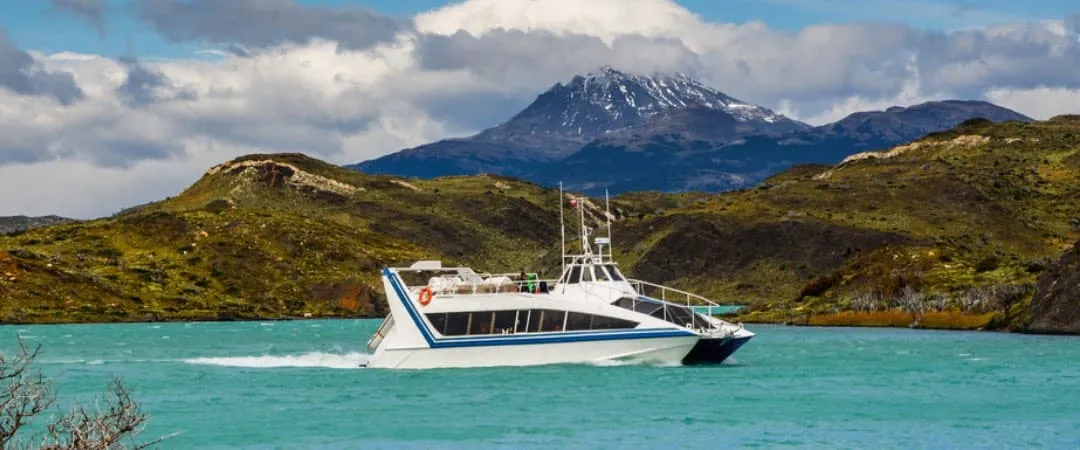
You want to do the W-Trek or the O-Trek in Torres del Paine National Park, but the whole transport situation seems a bit overwhelming. Is it though? We get a lot of similar questions about flights, buses, and catamarans and therefore decided to wrap it all together in a blog post. Vamos!
Where is Torres del Paine National Park?
How to get to torres del paine by air, how to get to puerto natales by bus, map with bus routes torres del paine, approximate bus times, bus from argentina to torres del paine, how to get to torres del paine from puerto natales, catamaran from pudeto to refugio paine grande, return to puerto natales after catamaran crossing, where can i book my walking holiday in chile.
Torres del Paine National Park is located in Chilean Patagonia . It was established in 1595 and it attracts as much as 250.000 visitors a year. These visitors mainly make find their way there through the small town of Puerto Natales, about 2 hours south of the Torres del Paine. Puerto Natales is about 3 hours from Punto Arenas, the closest airport.

Self Guided W-Trek (Camping)
You can get to Punta Arenas (IATA code PUQ), the nearest commercial airport to the gates of Torres del Paine, from Santiago de Chile. There are several daily flights that take 3.5 to 4 hours. The most frequent flights are offered by LATAM and Sky Airline . If you come from Argentina, you will not be able to catch a direct flight to Punta Arenas. From Buenos Aires, it is best to fly to El Calafate and from here move on via bus to Puerto Natales. However, if you by any chance have to possibility to find your way to Torres del Paine via the Chilean way, then this is recommended. The border crossing between Argentina and Chile can suck up a lot of time and money. You can also fly straight to Puerto Natales, but as the number flights are limited, this is not a very common way of travel.
The best way to get to Torres del Paine is by bus. In recent years bus transportation has come a long way and buses are comfortable. The views underway are a great warming-up for what you are about to see once you have arrived for your trekking. Coming from Punta Arenas you can easily take a bus to Puerto Natales. Easy, because this is the route most people take on their way to Torres del Paine. You can take either Bus-Sur or Buses Fernandez. Expect to pay an amount of 7.000 to 8.000 pesos (12 USD) for a one-way ticket.
Punta Arenas - Puerto Natales
8:00, 9:00, 11:00, 13:00, 14:30, 16:00, 17:00, 18:30, 19:15, 20:00, 21:00
Puerto Natales - Punta Arenas
7:00, 7:15, 9:00, 11:00, 13:00, 14:30, 17:00, 18:30, 19:15, 20:00, 21:00
Your trekking company assists you with the arrangements of your bus tickets. As availability always plays a role, it is recommended to take care of this well in advance of your travels.
You can also catch a bus from El Calafate. Depending on how easy it will be to cross the border, this journey can take up to 5 hours. As buses leave early in the morning, you will need to spend the night in El Calafate.
Regardless of whether you have booked a guided or a self-guided O-Trek or W-Trek tour via Bookatrekking.com, it will include a transfer from Puerto Natales to the starting point of your trek. Hence, you do not need to organize any transport from Puerto Natales to Torres del Paine. If you have not booked a tour via Bookatrekking.com, you can explore the different options that Buses Fernandez and Bus Sur offer. Alternatively, you can organize a private transfer. This is, however, usually a costly matter. It is recommended to book a tour that has a transfer included.
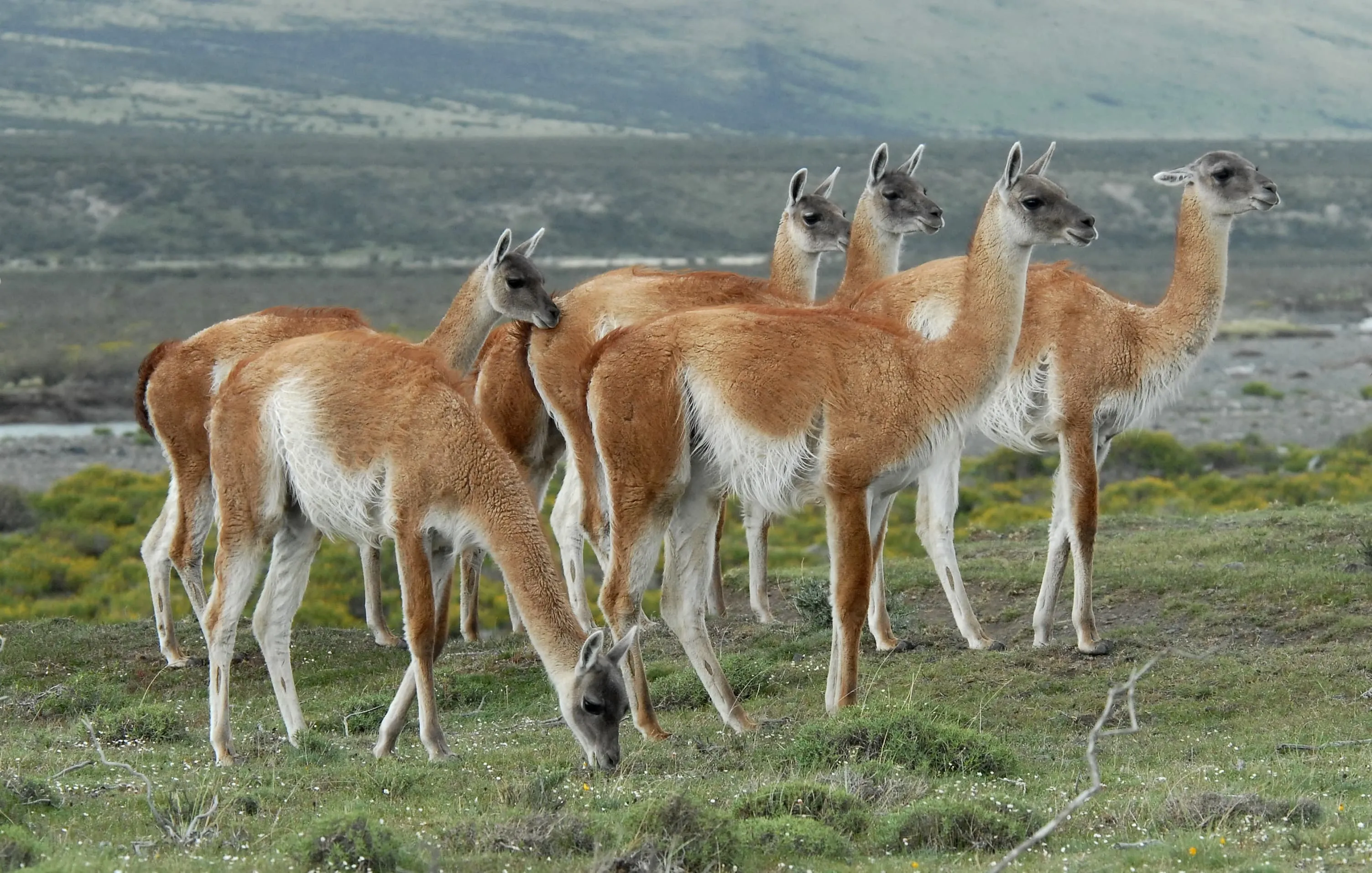
Most trekking itineraries, both guided and self-guided, for Torres del Paine include an exciting boat ride by a catamaran crossing Lake Pehoe. If it is included, the fare will be taken care of. If you have not booked a tour which includes transportation, expect to pay about 40 USD for a ticket. Mind that this needs to be paid in Chilean Pesos. The crossing takes about 25 minutes and has by default the following departure time:
From Pudeto
01-09 to 31-10 11:00 18:00
01-11 to 30-11 09:00 11:00 18:00
01-12 to 28-02 09:00 11:00 14:00 16:15 18:00
01-03 to 31-03 09:00 11:00 16:15 18:00
01-04 to 30-04 11:00 18:00
01-05 to 31-08 12:00
From Paine Grande
01-09 to 31-10 11:35 18:35
01-11 to 30-11 09:35 11:35 18:035
01-12 to 28-02 09:35 11:35 14:35 17:00 18:35
01-03 to 31-03 09:35 11:35 17:00 18:35
01-04 to 30-04 11:35 18:35
01-05 to 31-08 12:35
Presuming you are enjoying the catamaran at the end of your trek, you will need to calculate some time for your bus back to Puerto Natales. That is, if you have not booked your tour through a trekking company listed on Bookatrekking.com. In Pudeto you can catch a bus back to Puerto Natales. Regardless of what catamaran and the time you arrive in Pudeto, there will be a means of transport to help you back on your way to Puerto Natales Buses Maria Jose is a good option for the traveler without a pre-booked itinerary. If you have booked your W-Trek or O-Trek through Bookatrekking.com, you can rest assured that you have tickets for the bus from Pudeto to Puerto Natales. Do you have any more questions about transportation in Torres del Paine in Chilean Patagonia? Do not hesitate to get in touch with us! Here you can have a look at our offers for Patagonia .
At Bookatrekking.com you can book many treks in Chile. We take care of all the details for you, give you personal trekking advice and give you the best service possible. Find all our offers for Chile here . Our easy-to-use platform allows you to browse and compare different trekking options and find the perfect fit for your interests, abilities, and budget.
If you have any questions about a specific trek or need help choosing the right one for you, our team of Trekking Experts is here to assist you. Simply reach out to us and we will be happy to provide you with personalized recommendations and advice to help you plan the trekking adventure of a lifetime.
Is a walking holiday in Chile not your cup of tea and are you looking for other epic adventures? Check out one of our following blog posts:
- Peter Habeler Runde
- Salzburger Almenweg
- Berliner Höhenweg
- Palaronda Trek
- Alta Via del Granito
- Everest Base Camp Trek
- Annapurna Circuit Trek
- Nepal Travel Guide
- Salkantay Trek
- Peru Travel Guide
- West Highland Way
- Rob Roy Way
- Great Glen Way

Also Interesting
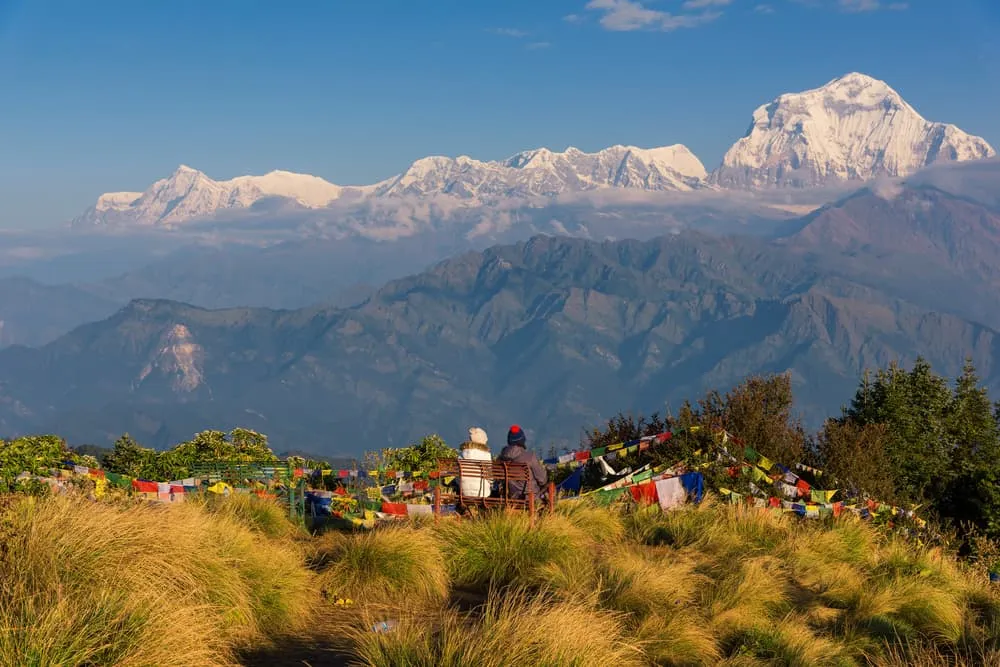
Poon Hill Trek: The Ultimate Hike to a Million Dollar View

Trollheimen Triangle Route: Best hut tour in Norway

What have Bookatrekking.com's hikers been up to in 2023?
Get weekly inspiration with the best treks.

Tag: catamaran
- Posts tagged “catamaran”
Lake Pehoé Navigation Schedule 2019-2020 by Hielos Patagónicos Catamarán (PUDETO – LODGE PAINE GRANDE) Updated
- October 10, 2018 December 28, 2019
- Mauricio Escalona
- Destinations , FAQ , Trekking
- catamaran , Lodge Paine Grande , Navigation , Pudeto , schedule , Torres del Paine
LAKE PEHOE NAVIGATION SCHEDULE 2019-2020 BY HIELOS PATAGONICOS CATAMARAN (PUDETO – LODGE PAINE GRANDE) UPDATED
Fees in Chilean Pesos One Way $18.000 Round Trip $28.000. Only cash accepted. (One backpack is allowed)
Charge per extra backpack:
$12,000 per backpacks over 50 Kg.
$6,000 per backpacks under 50Kg.
More info: www.hielospatagonicos.com
Phone number: +56 61 241 1133
SCHEDULE 2016-2017 OF LAKE PEHOE NAVIGATION BY HIELOS PATAGONICOS CATAMARAN (PUDETO – LODGE PAINE GRANDE)
- December 15, 2016 March 25, 2019
- catamaran , Lodge Paine Grande , Pehoe , Pudeto , schedule
SCHEDULE 2016-2017 OF LAKE PEHOE NAVIGATION BY HIELOS PATAGONICOS CATAMARAN (PUDETO – LODGE PAINE GRANDE) UPDATED
A Guide to Hiking in Torres del Paine: W, O, and Q Treks

Some of the links on this page are affiliate links
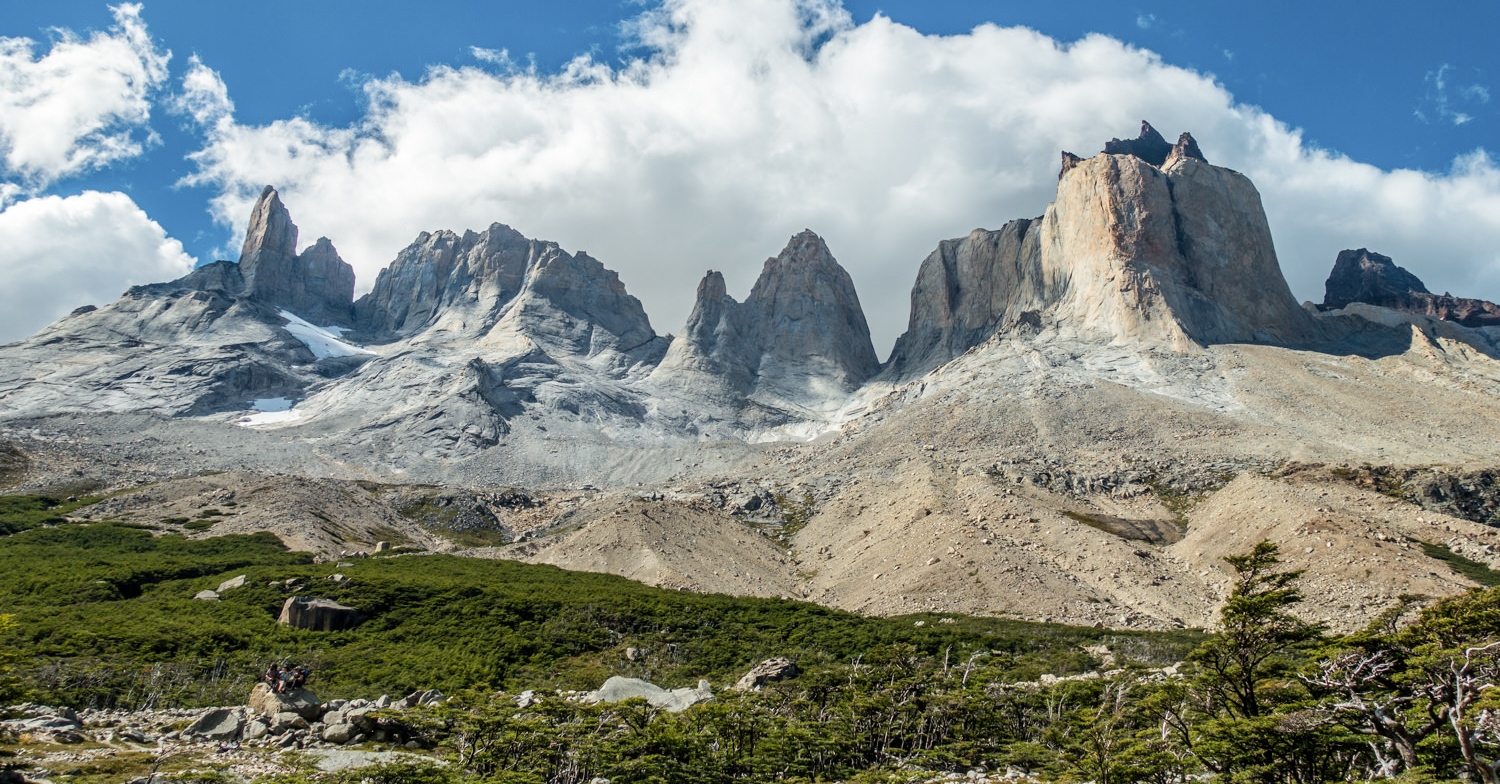
If it’s your first time visiting Patagonia, a trip to Torres del Paine will most likely be on your itinerary, and with good reason. This spectacular Chilean region offers some of the best trekking in the world. With dramatic granite spires, immense glaciers, and glistening turquoise lakes, Torres del Paine has all the ingredients for an unforgettable and rugged adventure.
For all its beauty and grandeur, hiking in Torres del Paine can be a very accessible activity. Trekking tourism has been rapidly increasing in Patagonia over the past five years, so you should expect to be sharing the trails. Though many people hike with organized tour groups, hiking independently is very possible. While we were planning our 2018 trip, we found a scarcity of up-to-date, good information for this region. We created this guide to help people navigate all the details of trekking in Torres del Paine: which trek to choose, campsite information, hiking itineraries, what to pack, and more.
For more information, check out our additional resources on backpacking and hiking in Patagonia
A Guide to Backpacking & Hiking in Patagonia
Backpacking in Patagonia – Gear Checklist
Best Backpacking Gear – CleverHiker Gear Guide
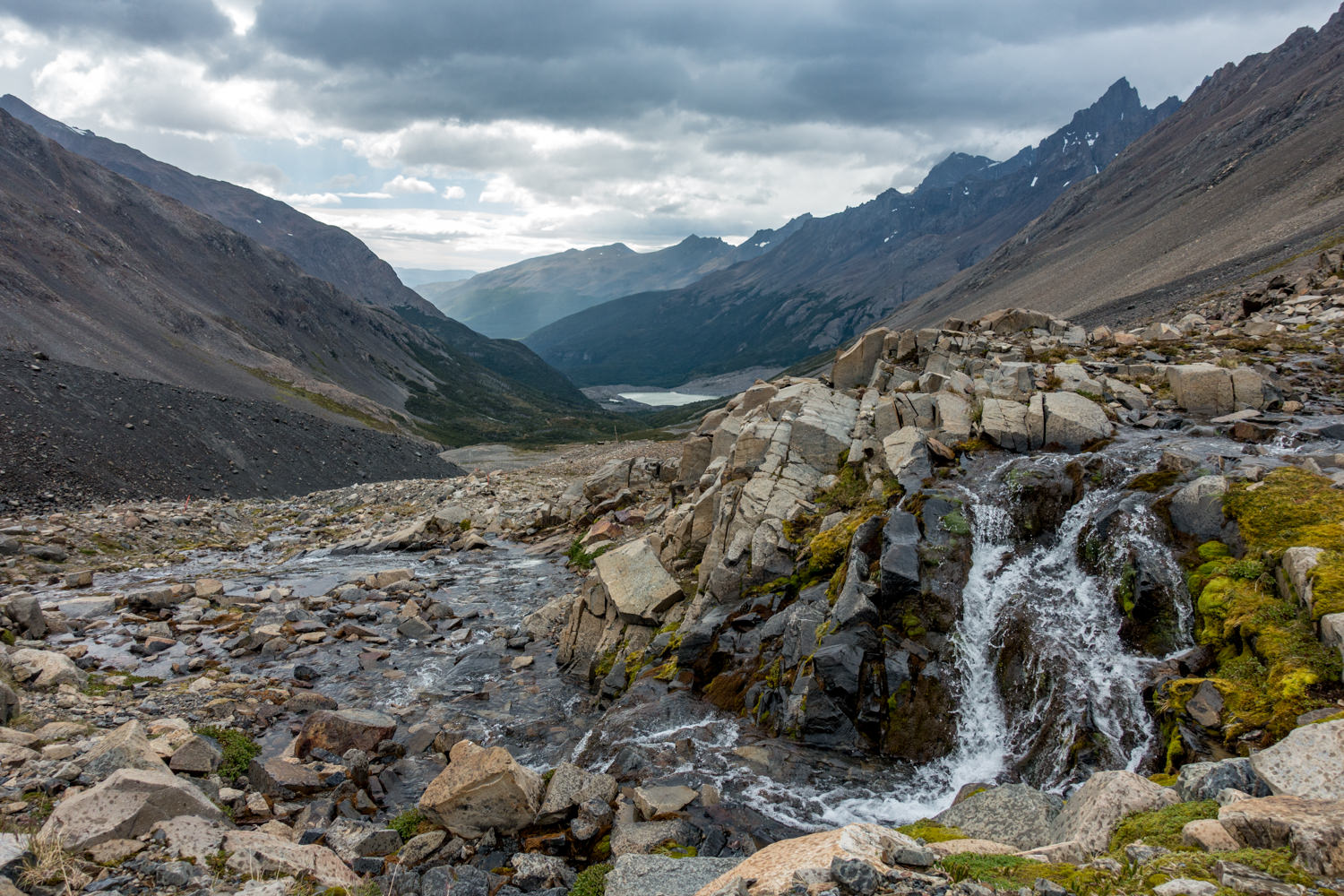
WHEN TO VISIT
SUMMER (December-February) : The peak hiking season in Patagonia is during the summer months of December through February when the temperatures are the warmest and days the longest. Though hiking in 60-70 degree temperatures is quite nice, the crowds will be high and the wind can be quite fierce during the summer months, with gusts up to 75 mph at times. It’s common to receive some precipitation during the summer months, though with less intensity than in the fall.
FALL (March-April) : Hiking in the fall months can be a nice alternative to summer. The temperatures will be slightly cooler, but the crowds will be lighter and the wind is often less intense during this time. However, precipitation can be highest during the months of April and May, so you’ll want to plan accordingly. Many people also choose to come during fall months to watch the trees turn from green to a fiery red, which is a breathtaking contrast against granite and glaciers.
SPRING (September-November) : Hiking in the spring months is a great way to enjoy Patagonia before the swathes of tourists arrive. Temperatures will be cool with daytime highs averaging in the 50’s, so you’ll need to bring warmer clothing. You can also expect less wind and less precipitation during spring months compared to summer.
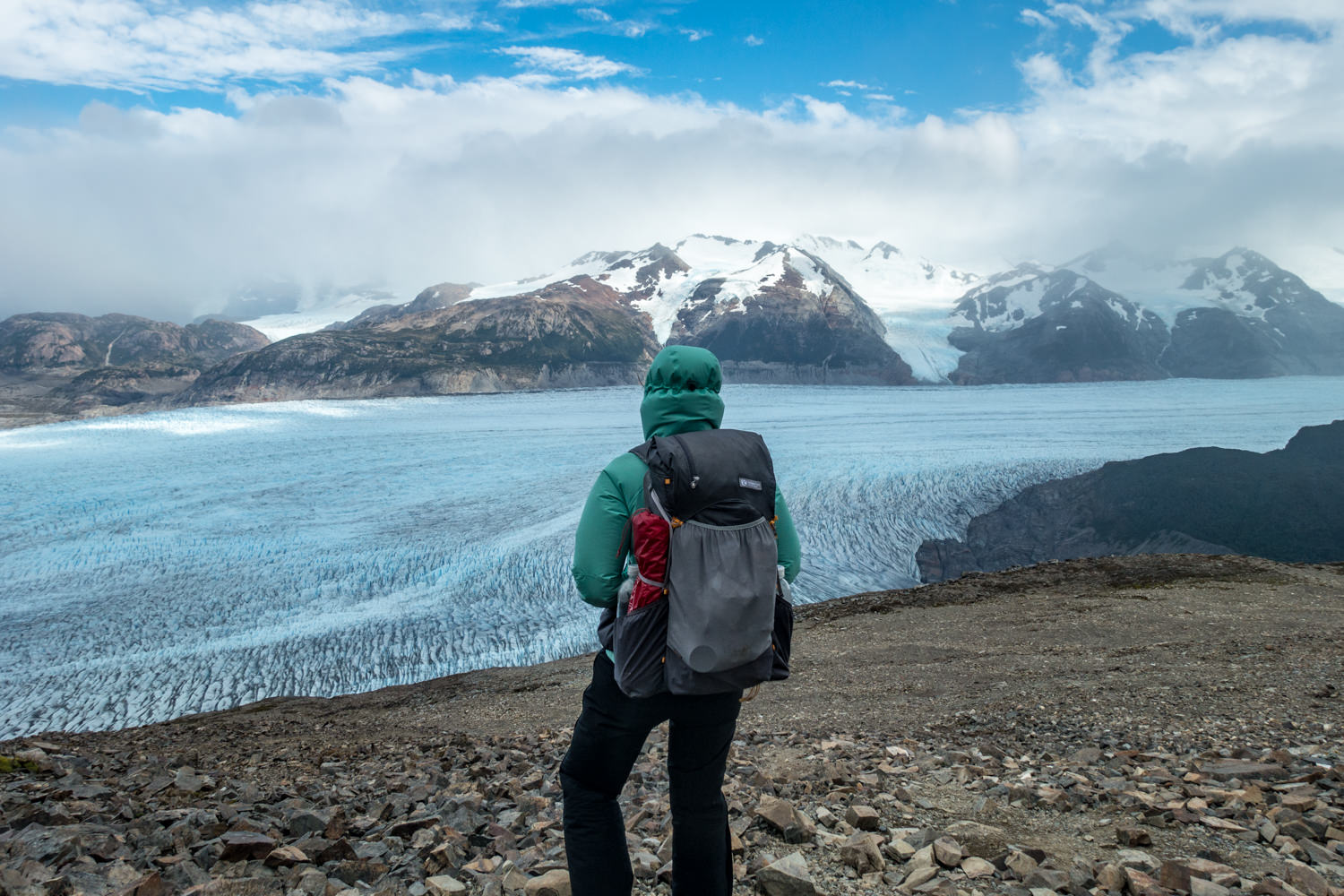
Weather (and wind!)
The weather in Patagonia is ever-changing and unpredictable. You can plan your trip (and gear) around the season, but we recommend to always be ready for any weather condition. You’ll often hear people talk about how you can experience all four seasons in one day, any day of the year. During your trip, you’ll most likely experience some rain, but what will stick with you are the winds. They will be like nothing you’ve experienced before. The strongest winds occur during the summer months of December to February, with calmer air in spring and fall, and the winds almost non-existent in winter.Be careful on exposed ledges, suspension bridges, or on pass days if winds are high. The best source for finding information on weather is at www.windguru.com , which will provide information on wind speed and gusts, precipitation, and cloud cover. If you stop by a ranger station in the area you’ll be hiking, they will most likely have the Wind Guru forecast printed and can help you decipher the somewhat confusing grid of numbers.
HIKING ROUTES: THE W, O, OR Q
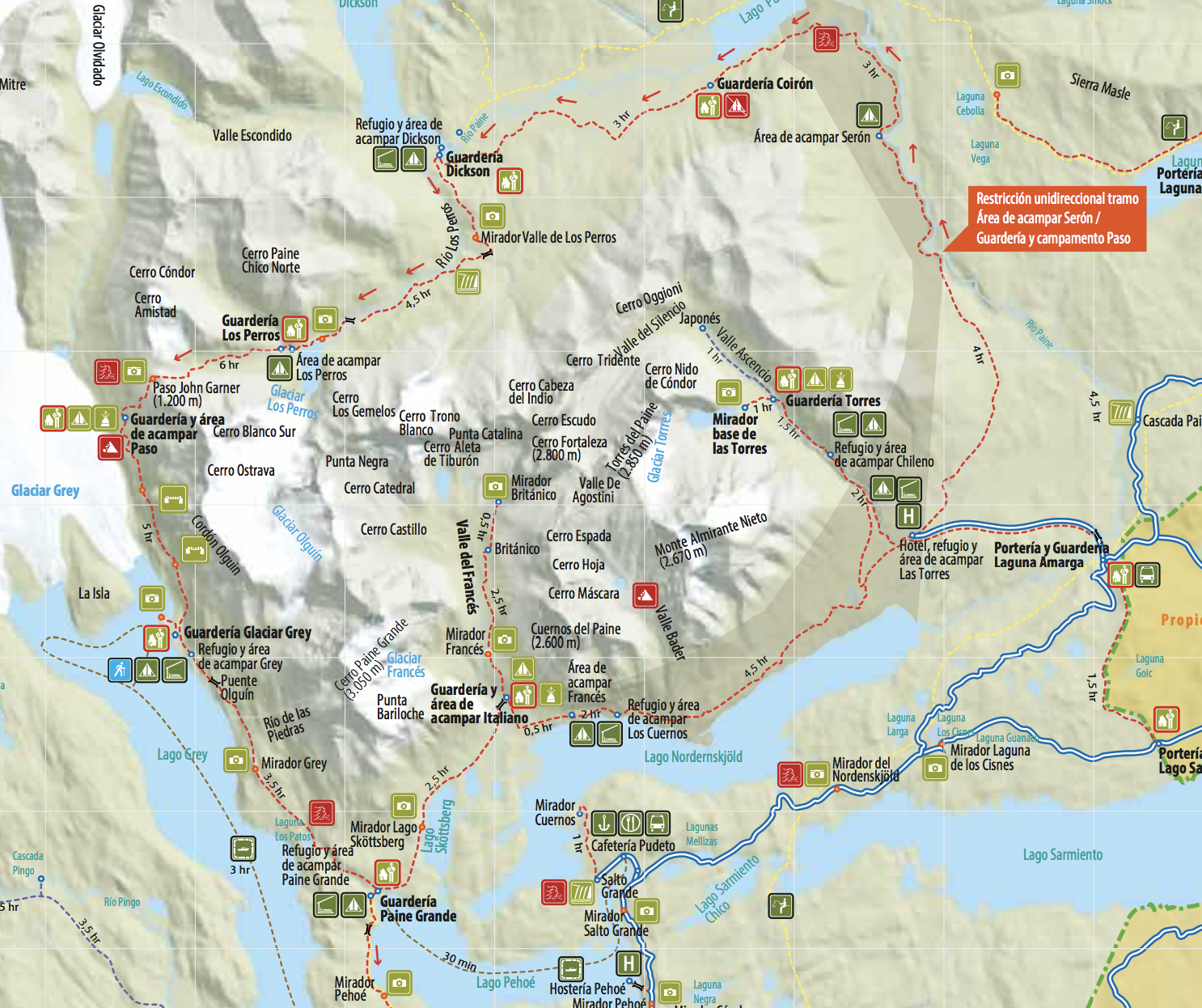
Map of torres del paine national park – image from torresdelpaine.com
W TREK: The most popular trek in the park, the W trek is roughly 80 km (50 miles) long and can be completed in 3-5 days. It covers some of the most iconic highlights in the park: Grey Glacier, Frances Valley, and the infamous Torres (towers). In high season, the route will be jam-packed with independent hikers, large tour groups, and day hikers. Though the route is busy, the sights are undeniably awe-inspiring.
O TREK – Also known as the Circuit, the O Trek covers the same trail as the W Trek, but circumnavigates the Cordillera del Paine over the course of 110 km (68 miles). Generally completed in 6-9 days, you’ll spend 2-3 nights camping on the less-traveled back side, which offers more solitude and opportunities to see the varied terrain of Torres del Paine. Traveling on the backside of park requires you to cross Paso John Gardner, which can be challenging (and sometimes closed) due to poor weather, high winds, and/or low visibility. The O trek is definitely a notch up in difficulty, but if you’re looking for more adventure, it’s truly a spectacular route away from the crowds. You can only complete the Circuit Trek in a counterclockwise direction.
Q TREK – Covering the most trail in Torres del Paine, the Q Trek travels the same route as the O, with an additional day of hiking south of Refugio Paine Grande along Lake Pehoe. Very few hikers cover this additional section so you’ll have some solitude and also earn one of the most spectacular views of the park, the Cordillera Paine rising above Lake Pehoe. You used to be able to begin your hike with the Q portion, leaving from the last bus stop, Administracion, and hiking towards Paine Grande. However, now CONAF only allows one-way travel from Paine Grande to Administracion, which requires you to end your Torres del Paine hiking there.
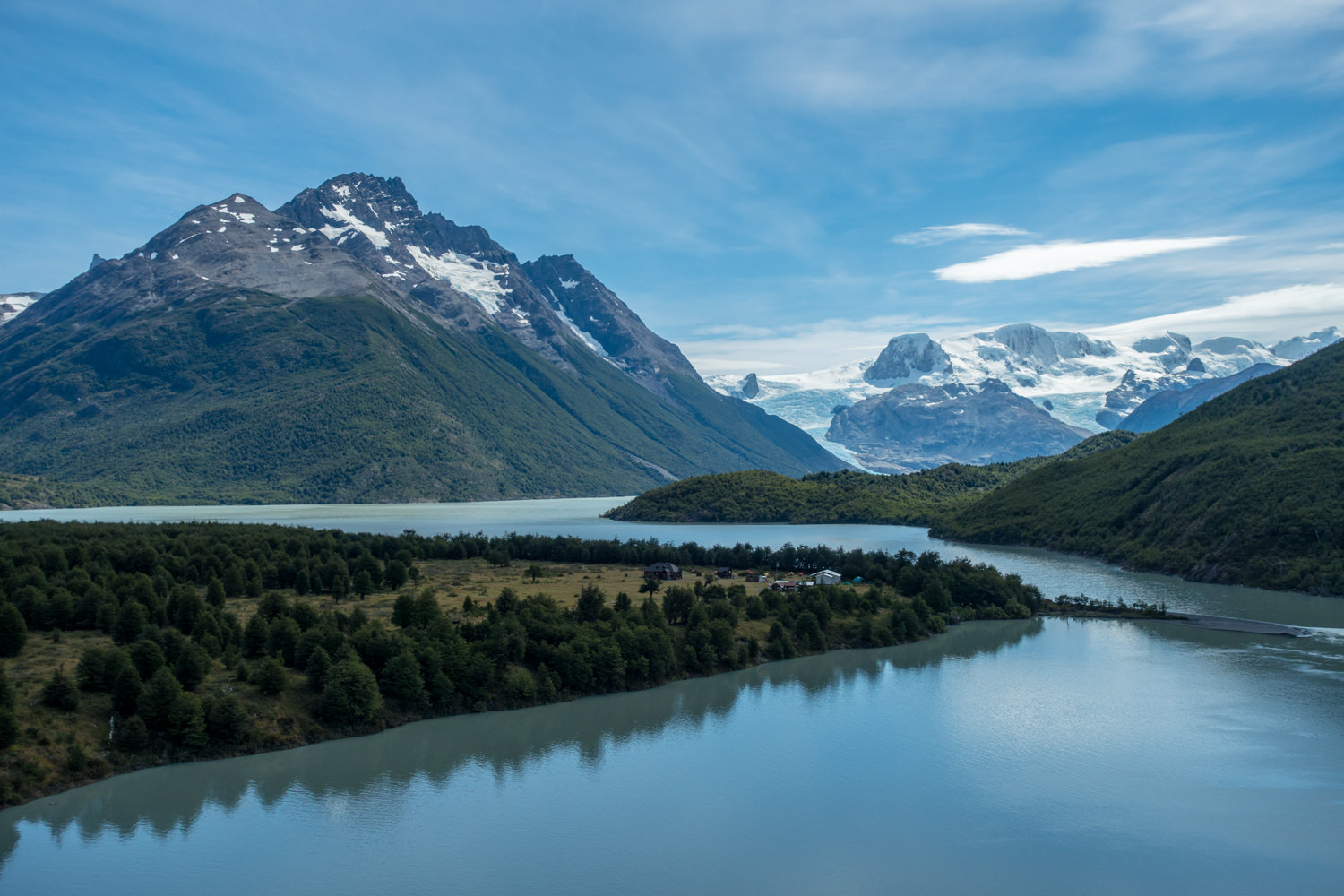
GETTING TO TORRES DEL PAINE
Most people begin their journey to Patagonia through either Santiago or Buenos Aires with a connecting flight to Punta Arenas. From Punta Arenas, you’ll take a roughly 3.5 hour bus ride to Puerto Natales, which is the gateway town to Parque Nacional Torres del Paine. There are many bus companies running this route and most buses are in good shape, comfortable, and punctual. We recommend buying your bus tickets ahead of time, especially during peak season. Purchasing your bus tickets online is easy and convenient with BusBud and Recorrido.cl .
From Puerto Natales, you’ll need to take a 90 minute bus ride to Torres del Paine on the day you plan on beginning your hike. You can either buy these online as well, or buy them at the bus station in Puerto Natales.
TREKKING PREPARATIONS
There is a large UniMark grocery store in town as well as many small shops catering to hikers with dried fruits, nuts, and other trekking grub. You’ll most likely need to pick up an isobutane-propane canister or two for your backpacking stove and can find this readily around town. Puerto Natales is also a great place to purchase or rent any backpacking gear.
Prior to your trek, we highly recommend stopping by Erratic Rock Hostel for their Torres del Paine info session. It’s held everyday at 3:00 pm. and covers any and all details you’ll need for your trek (weather, equipment, trail food, packing, refugios, trekking, climbing, transportation, the catamaran etc.) We found it incredibly helpful and the people leading the talk were awesome!

INDEPENDENT OR GUIDED HIKING
This is an important question for many planning a visit to Torres del Paine and the choice will likely come down to experience, personal preference, and your desire to put in the time to plan your own trip. If you’re an experienced backpacker, it is absolutely possible to hike independently. The trails are well-marked and maintained and if you stay on trail (and you absolutely should), it’s near impossible to get lost. If you plan to hike independently, you’ll need to have a good map , necessary campsites booked, and your own backpacking gear . There is also an option of renting gear in Puerto Natales or pre-arranging installed camping gear (tent, mattress, sleeping bag) with each campsite (more on that in the accommodations section below).
If you don’t want to sweat all the planning details or you can’t obtain the reservations you need independently, you have the option of going with a guide or tour. Guides can bring more to the table than just logistics management. Booking campsites in Torres del Paine can be confusing and hard to acquire. When you book with an agency, they take care of all the details (lodging, food, transportation, permits, etc). Furthermore, a good guide can also teach you about the local culture, flora, and fauna. You’ll most likely have a group consisting of hikers from all over the world, which can make for a fun and interactive trip. However, be expected to pay a high price for these services.
Though quality of service, lodging options, and prices can vary greatly by travel agency, below are some average costs of guided treks within Torres del Paine with full board (all meals and accommodation) included. Some agencies include all your transportation and lodging from Punta Arenas.
W Trek : $800-$3000 per person
O Trek: $1500-$4000 per person
GUIDED TREKKING PROS
All pre-trip details handled (permits, campsites,etc)
All transportation arranged
Little worry about any details while hiking (lodging, meals, route, schedule, etc.)
Local information on culture, food, etc.
INDEPENDENT TREKKING PROS
Can be much less expensive
Hike on your own schedule
No group dynamics to deal with, just you and the trail.
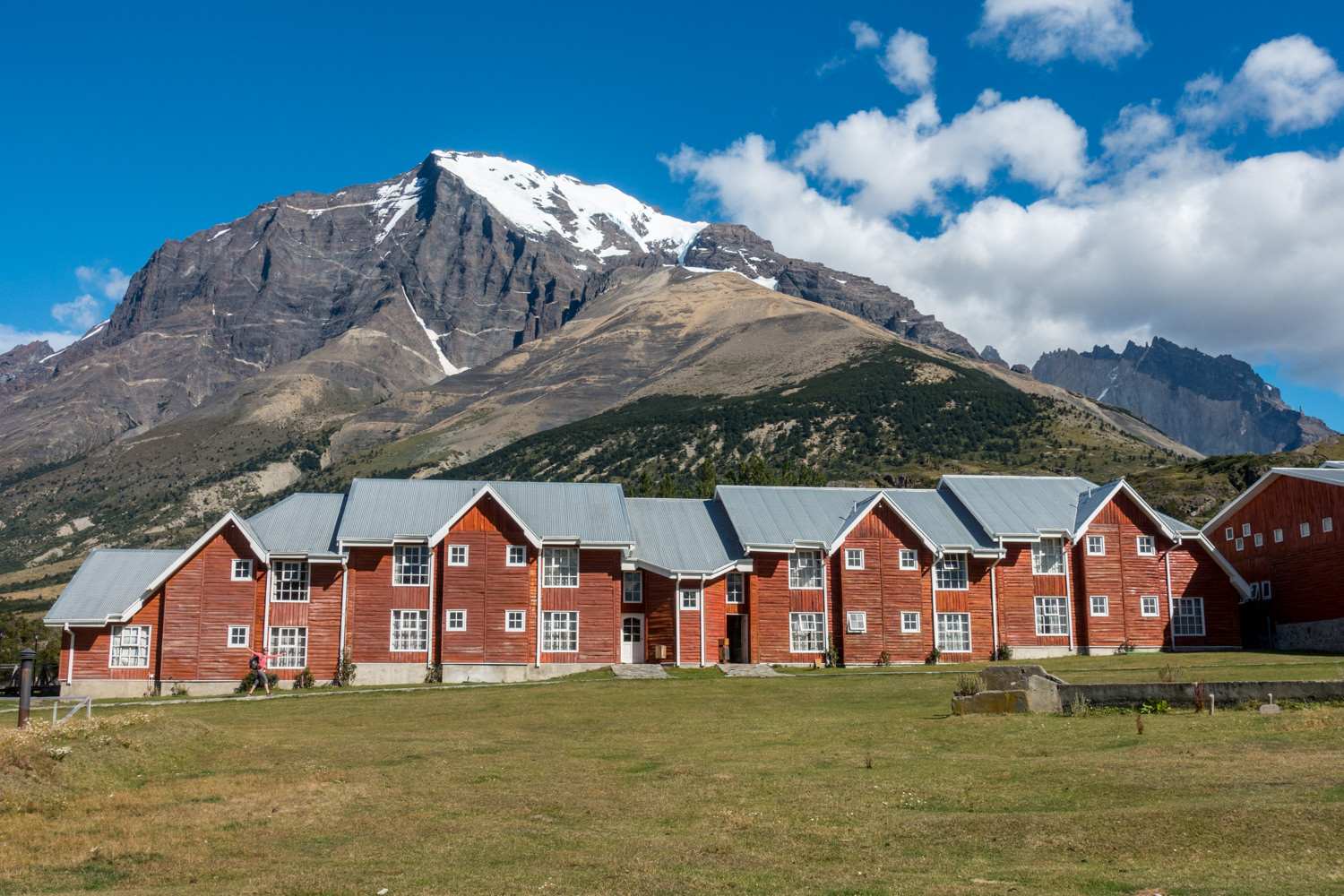
CAMPSITE RESERVATIONS
If you’re hiking independently, you’ll be required to book your own campsites. As of 2016, you must have reservations for all campsites or refugios prior to entering the park. Your proof of reservations will be checked at different control areas as well as all campsites and refugios, so don’t even attempt to enter the park without proof of reservation. Due to increasing popularity, you’ll need to book your campsites months out. To further complicate the process, there are three different agencies you’ll need to book through in order to complete the full circuit: CONAF , Vertice Patagonia , and Fantastico Sur .
In order to book your trip, you will need to organize your own itinerary with specific dates and desired campsites. Once you have an itinerary, you’ll need to ensure availability with all three agencies, which can take patience and a lot of perseverance. As of 2018, all three agencies are now set up for online reservations.
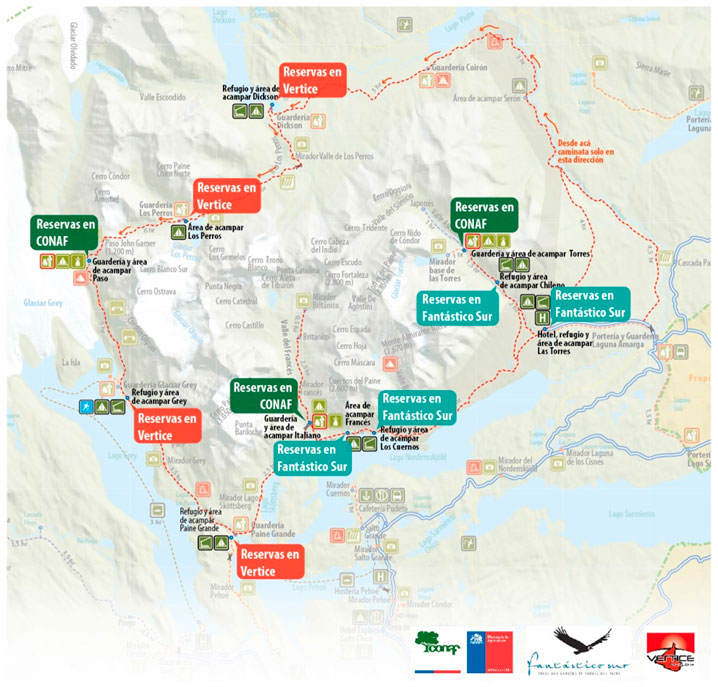
Map of campsites and reservation agency – map from www.parquetorresdelpaine.cl
CAMPSITES: Paso, Italiano, and Torres (Torres closed for 2018 season).
These campsites are free and provide basic services including a space for a tent, simple outhouse style bathrooms, and a three walled shelter to cook inside. Because they’re free, they can be some of the most competitive campsites to obtain. You can make reservations online here .
Vertice Patagonia
CAMPSITES: Paine Grande, Gray, Dickson, Los Perros
REFUGIOS Paine Grande, Gray, and Dickson.
These campsites and refugios range in quality and offerings. You can check their website for what is available at each site. Many people book all-inclusive guided trips for the W and O treks through Vertice Patagonia. You can make reservations online here .
Fantastico Sur
CAMPSITES: Seron, Las Torres, Chileno, Frances
REFUGIOS: Torre Central and Torre Norte, Chileno, Cuernos
DOMES: Frances
CABANAS: Cuernos
Fantastico Sur’s accommodation options can be somewhat confusing to decipher. There are some campsites (Chileno and Cuernos) where they don’t provide a cooking area, which means you have no choice but to pay for full board. Although full board can be costly when you’re used to cooking your own meals, we found the meals at Chileno to be delicious and high-quality. Your two camping options at many of their sites are platform and platform premium. More on that below. You can make reservations online here .
ACCOMMODATION TYPES
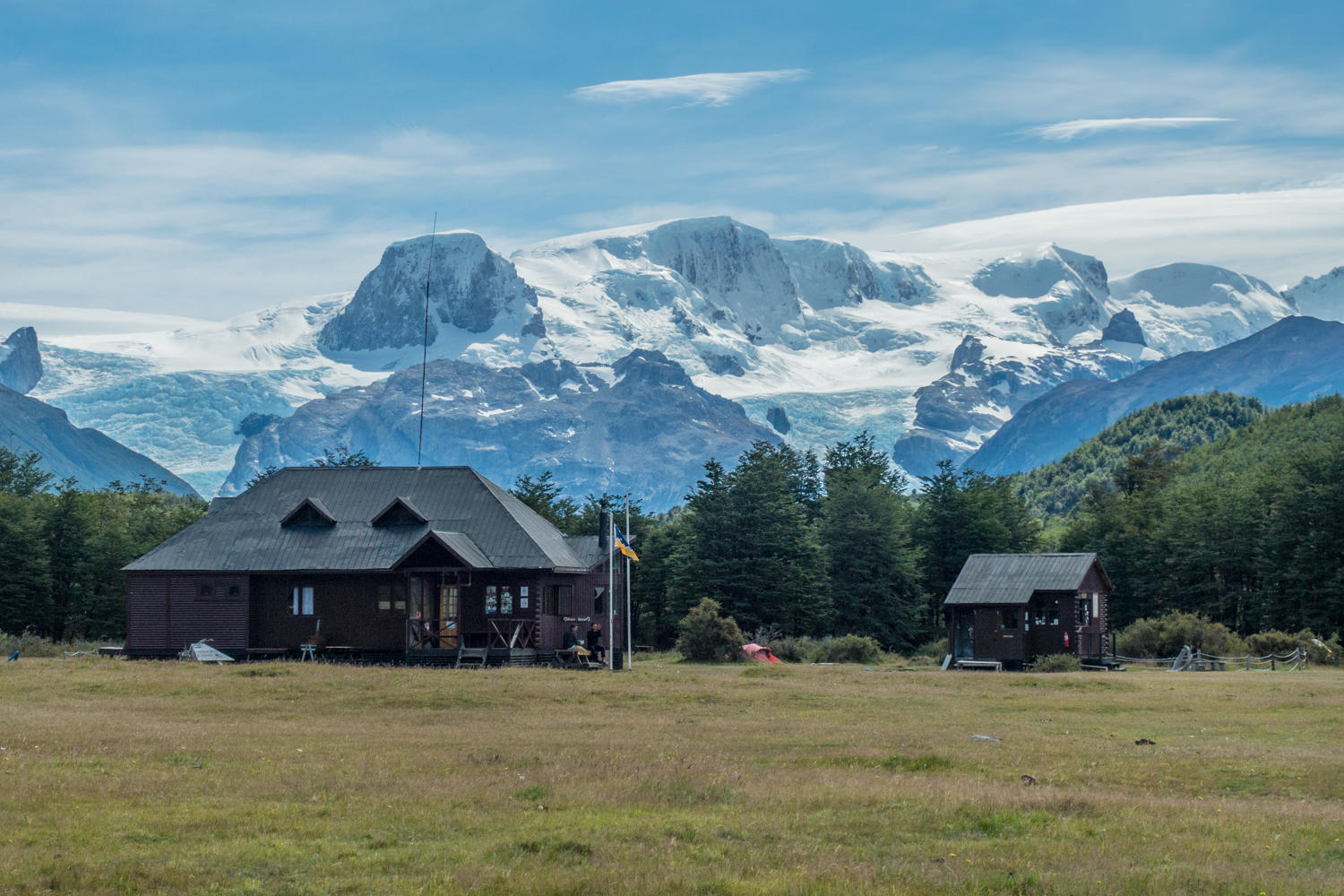
REFUGIOS – The most expensive accommodation option, refugios are simple mountain lodges with bunk-bed style mixed dormitories. They often offer shared bathrooms with shower and hot water, a restaurant and bar, and living rooms that are generally heated with firewood, if need be. Although you’ll be sleeping in a bed, we still recommend bringing a sleeping bag as you may only be offered a bottom sheet in some refugios. Refugios can range from small charming huts that sleep 27 (Refugio Dickson) to large, hotel style refugios that sleep 100 (Refugio Paine Grande).
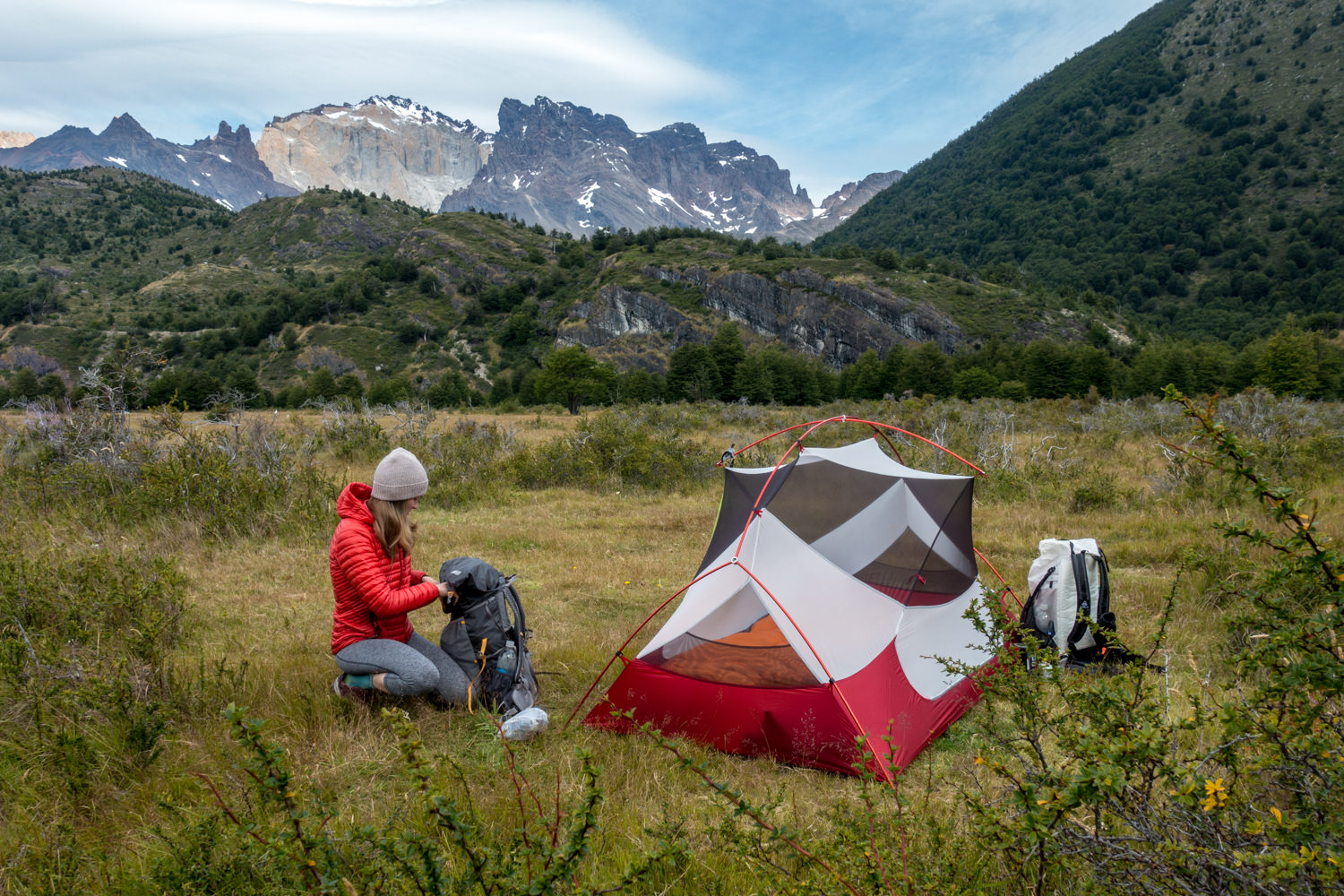
CAMPING – At most sites, you’ll set your tent up in a designated camping area, usually a field or a platform. If there’s also a refugio at the campsite, campers have access to the restaurant, bar, bathroom, showers (if available), and small store – which is awesome! There are designated cooking shelters at every campsite, which you’ll be required to cook in. There will always be a bathroom, but the style ranges from a simple outhouse style with no showers (Paso and Italiano) to flush toilets and hot showers (almost everywhere else).
Regular Campsite: At many of the campsites along the way you’ll just be pitching your own tent in a designated camping field.
Platform : You’ll be given an elevated wooden platform. You’ll use your own gear to set up camp. Full board consisting of three meals may or may not be included in the price. At Camp Chileno, this is the only option for camping.
Supported Camping : For an additional cost and with a pre-arranged reservation, you’re able to rent an installed tent, mattress, and sleeping bag at certain campsites. This can be a good option for those who want to camp, but don’t want to carry the weight of a full backpacking setup. This may or may not also have full board included.
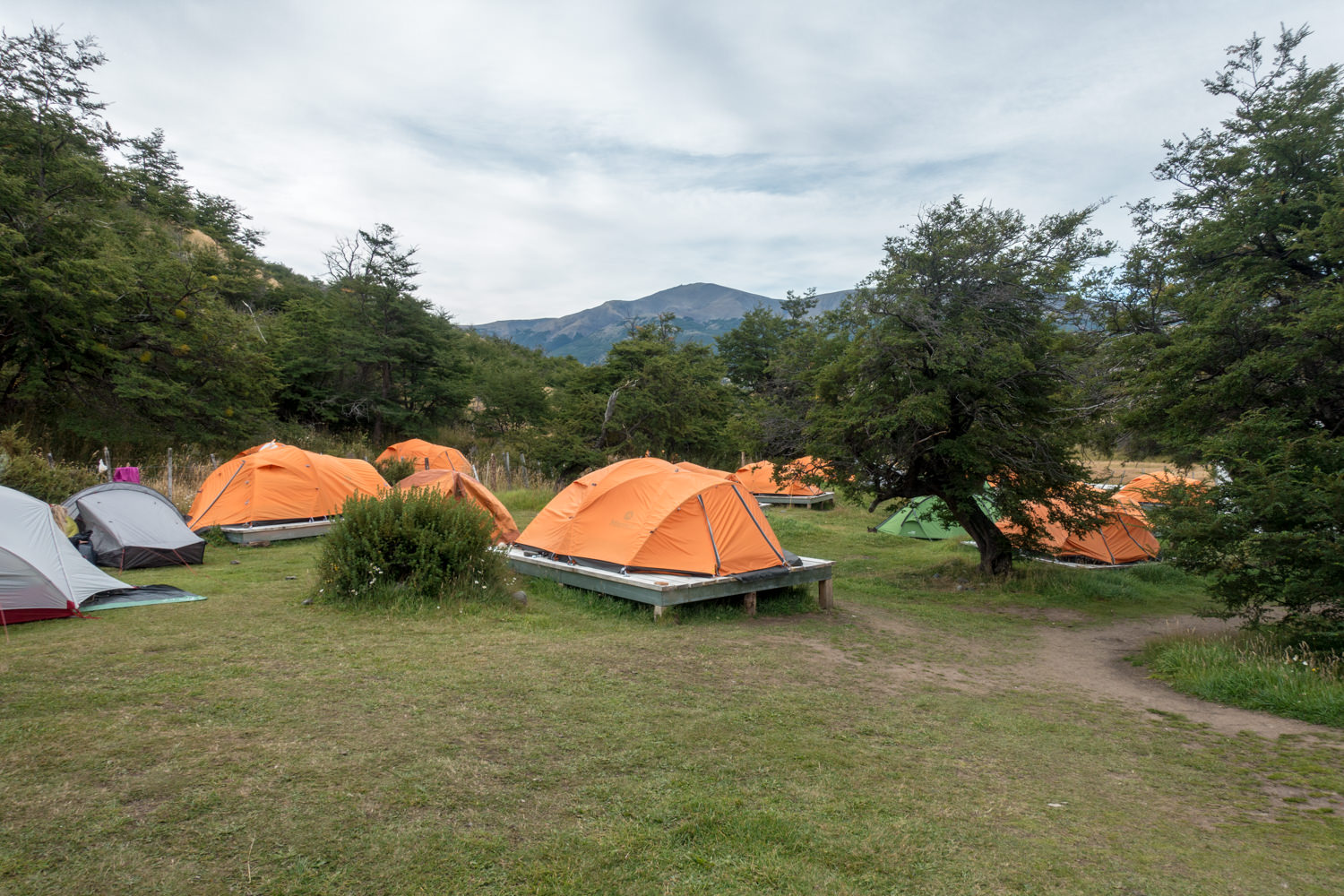
W TREK ITINERARY
By far the most popular trek in the park, most people complete the W hike in 3-5 days. You can complete the W trek in either direction, either starting at Paine Grande/Glacier Grey or at the Torres. We recommend starting at Paine Grande and saving the best for last, but that is merely our opinion. Below is the itinerary for that route.
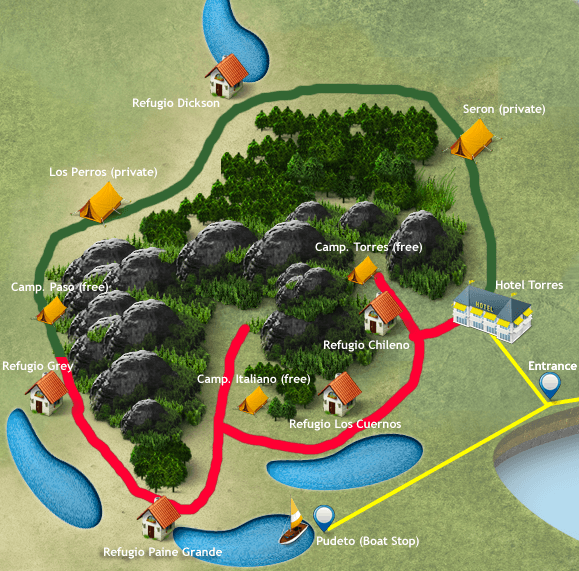
DAY 1 : PUERTO NATALES TO PAINE GRANDE (DAY HIKE TO GLACIER GREY)
Distance: 22 km/13.5 miles roundtrip
Time : 6-8 hours
Your day will start early today and be a mix of travel and hiking. You’ll start by taking the 7:00 am bus from Puerto Natales to the Laguna Armaga bus stop. Here everybody will get off the bus and pay their entrance fees. At this time, you’ll get back on the bus and head to the Pudeto stop. From here, you’ll take the Catamaran across Lago Pehoe to Refugio Paine Grande. Reservations are not taken in advance. You need to organize your crossing directly at Pudeto. The journey takes about 20 minutes. Current price for the cost is $40 USD per person one way. If all goes as planned you should be to Refugio Paine Grande by noon that same day.
After you disembark from the catamaran, you’ll drop the majority of your gear at Paine Grande and pack a day pack for your hike up to breathtaking Glacier Grey. It will take roughly 6-8 hours roundtrip to head to Glacier Grey and make it back to Paine Grande for the night.
If you want to go at a more leisurely pace, you can also add an additional night to your itinerary and stay at GlaGrey on the first night of your trip.
DAY 2: PAINE GRANDE TO ITALIANO (AND OUT & BACK IN VALLE FRANCES)
Distance: 7 km/4.5 miles to Italiano where you’ll set up camp. Then 11.5km/7 miles from Italiano up to Mirador Britanico and back.
Time : 7-8 hours
You’ll start the day with a relatively easy and short hike to Camp Italiano, where you can set up your camp and prepare a day pack for exploring the Valle de Frances. Because this hike is an out and back, you can hike as far as you want in the valley, though we recommend going all the way to Britanico- they views are unreal!
You’ll follow the Rio del Frances as you head up the valley with dramatic views of Paine Grande and it’s creaking hanging glacier along the way. There’s a beautiful mirador about an hour into the hike where many people will be gathered. If you have the time and energy, we recommend pushing on to the Britanico Mirador. The trail levels out a bit after the first mirador as you head deeper into the valley. You’ll be rewarded greatly as you arrive at Mirador Britanico.
DAY 3: ITALIANO TO CHILENO
Distance : 19 km/12 miles
Most of your hiking today will be hugging the shoreline of beautiful Lago Nordenskjold with breathtaking views of the Cuernos del Paine on your left. You’ll follow the straightforward and relatively flat trail until the trail splits. If you’re staying at Chileno, you’ll follow the trail to the left. If you are unable to get reservations at Chileno, you’ll most likely be camping at Central/Las Torres and will take the trail to the right. The trail to Chileno begins to climb almost immediately as it makes its way up the valley. After about an hour or so you’ll meet up with the main trail to the Torres and finish your hike to Chileno.
DAY 4: CHILENO TO MIRADOR TORRES AND BACK TO CENTRAL
Distance : 12 km/8 miles
Time : 4-6 hours
This is the day! You’ll set your alarm for an ungodly hour (4 am for us) and grab your breakfast in the Chileno refugio before beginning your headlamp climb up to the Torres for sunrise. You’ll hike for about an hour on forested trail before you hit the boulder field scramble, which will take another hour. You may have stripped all your layers on the hike up, but once you reach the Torres you’ll want to put them all back on and crawl into your sleeping bag to prepare for the sunrise show (if you’re lucky!) When you’ve taken all the photos you can muster, you’ll turn around and head back to Chileno, pack up your gear, maybe have a celebratory beer, and then head down to Central to finish your W Trek.
Because you started your hike so early today, you should have no problem catching a bus back to Puerto Natales that afternoon.
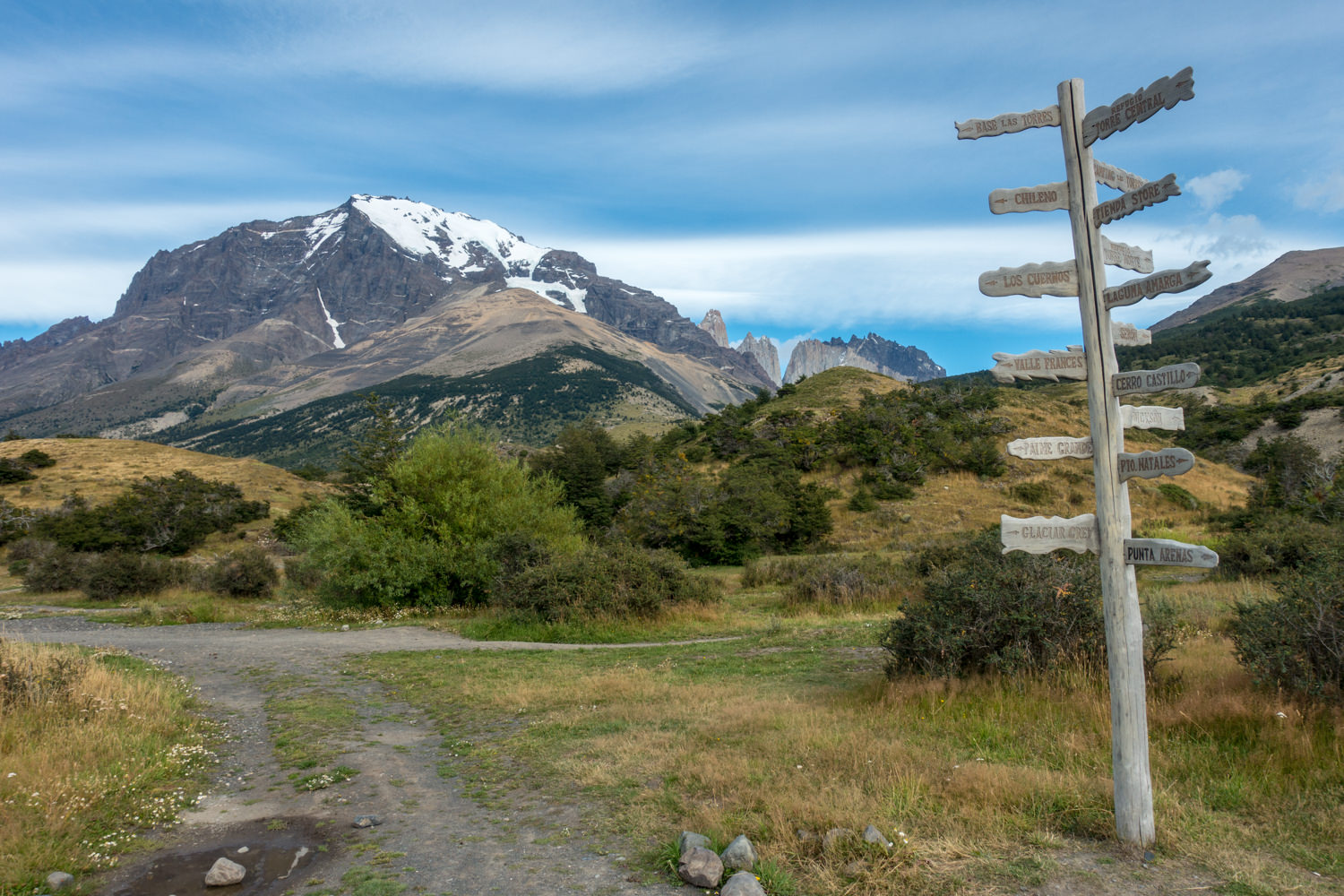
O TREK ITINERARY
We completed the O Trek in 6 nights/7 days and felt that the pace was good for us. We hike with our own lightweight backpacking gear and generally hike at a faster than average pace. That said, many people who want to take it at a slower pace will take up to 9 days to complete the circuit.
You can only hike the Circuit in a counterclockwise direction. You have two starting options: Hotel Las Torres or Paine Grande.
Beginning at Hotel Las Torres : You’ll get off the bus at Laguna Amarga, pay your park fee, watch a video, and then take the shuttle (3,000 Chileno Pesos each way) to Central, where you’ll begin your trek.
Beginning at Paine Grande : You’ll get off the bus at Laguna Amarga, pay your park fee, watch a video, and get back on the bus to head to the next stop at Pudeto. From Pudeto, you’ll take your prearranged catamaran to Paine Grande, where you’ll begin your O Trek in the counterclockwise direction.
Below is our 7 day itinerary starting at Hotel Las Torres with distances and estimated times. We found most estimated times on maps and in guidebooks to be conservative. Consider your own hiking style and speed when making a plan.
DAY 1: HOTEL LAS TORRES TO SERON
Distance : 13 km/8 miles
Time : 4- 5 hours
This day is a relatively easy and moderate day of hiking through forests. Camp Seron has a feild to pitch your tent, as well as some installed tents with rented gear. They have a small restaurant and bar, hot showers, shared bathrooms, and a cooking shelter. You’ll want to bring some bug spray as mosquitos can be quite fierce at this camp.
DAY 2: SERON TO DICKSON
Time : 5-6 hours
Your second day has several small accents, but is generally a moderate day of hiking through some beautiful landscapes. You’ll skirt the shores of beautiful Lago Paine and get your first views of the Cordillera Paine. Halfway through your day you’ll stop at the Camp. Coiron Ranger Station where you’ll sign in and show proof of all your reservations. You’ll eventually hit Camp Dickson, which is one of the most beautiful campsites on the trek, in our opinion. Grab a beer and make sure to head down to the river for some solitude and amazing views. Heads up: mosquitos are relentless at this camp.
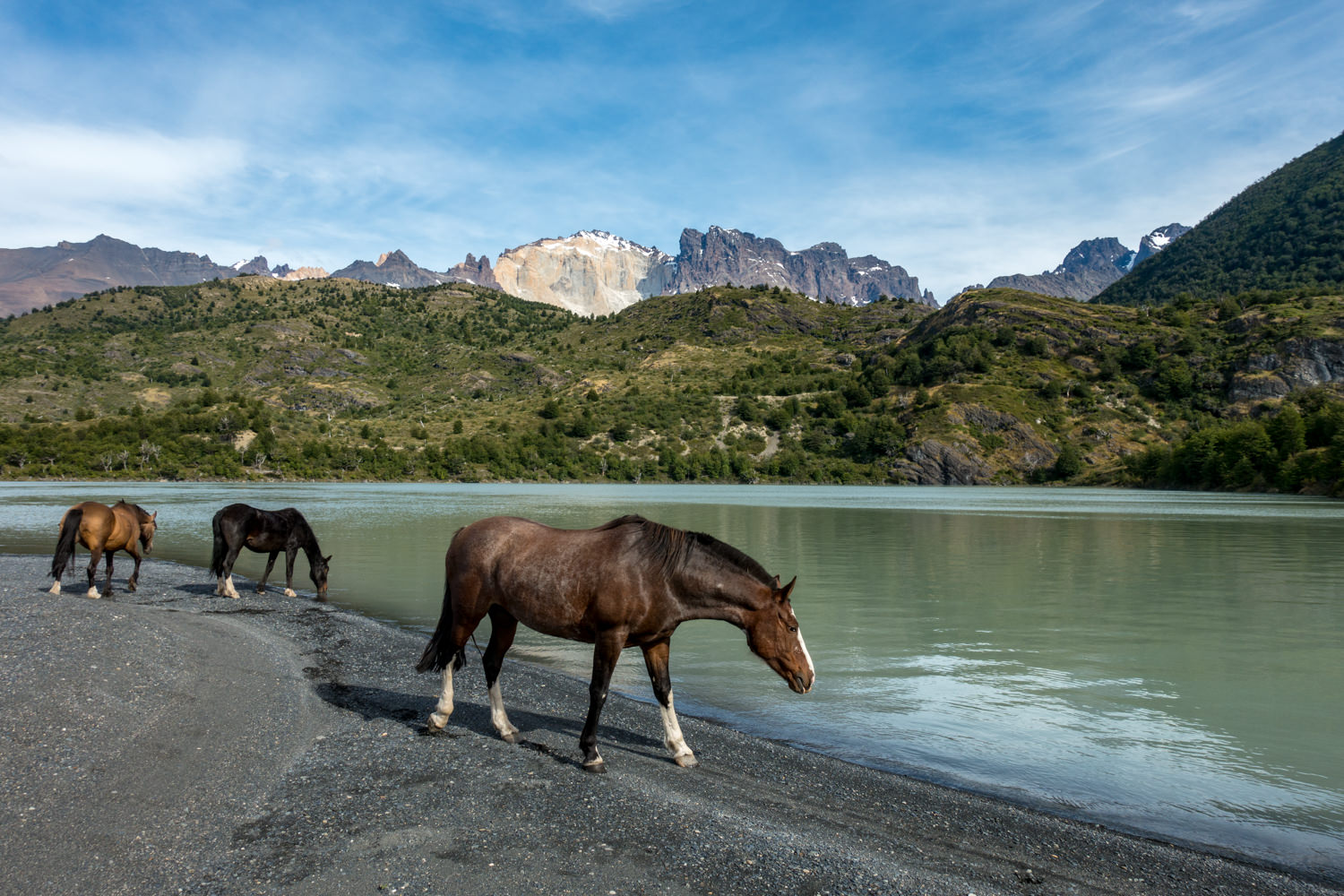
DAY 3: DICKSON TO PASO
Distance: 19 km/12 miles
Time : 7- 9 hours
We started this day before sunrise as we knew it was going to be a long day. About an hour into the hike we reached a beautiful mirador right at sunrise, which was really incredible. It’s a 2-3 hour hike to Camp Los Perros, where you’ll check in with the rangers and receive any information you may need about Paso John Gardner. From Los Perros you’ll begin a steep ascent through forest and eventually a boulder field as you make your way up and over the pass. Make sure to follow the orange pole markers which are set up along the way. It should take between 4-6 hours from Los Perros to Paso. The descent from Paso John Gardner is long, steep, and knee-busting, but hiking next to the breathtaking Glacier Grey along the way makes the escent tolerable.
Many people break this day into two hiking days with a night at Camp Los Perros, which is the last camp before you head over the John Gardner Pass. We decided to do the 12 km is one long day, which was totally doable if you are in decent hiking shape and the weather over the pass cooperates.
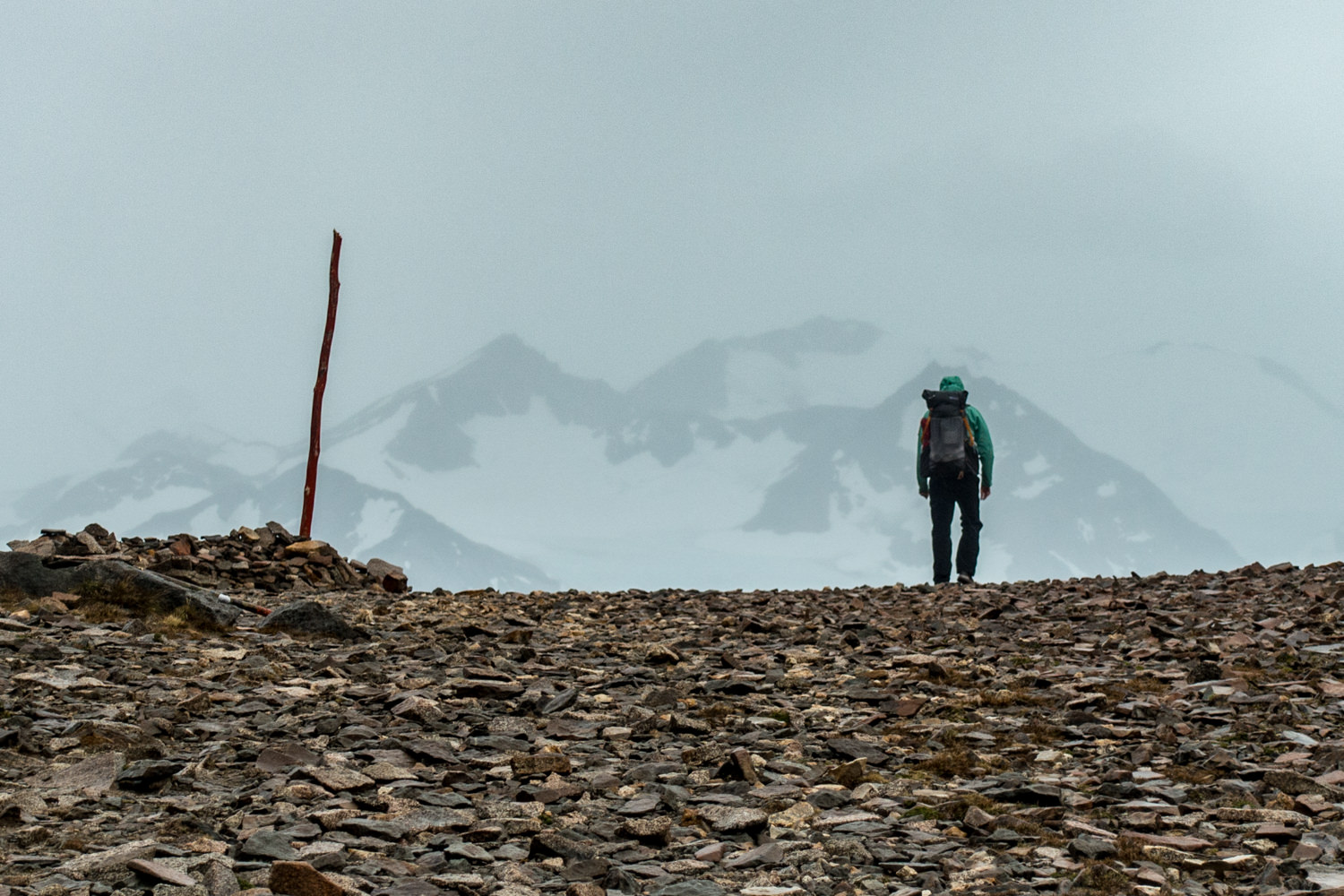
DAY 4: PASO TO PAINE GRANDE
Distance: 18 km/11 miles
Time : 5-7 hours
This day begins with some undulating ups and downs as the trail hugs the mountainside. You’ll be hiking alongside the immense and beautiful Glacier Grey for most of this day. You’ll cross three suspension bridges as you make your way to the Refugio Grey, where you’ll meet up with hikers completing the W Trek. From here on out, the trail will be more crowded and the solitude you experienced on the backside of the O will be a distance memory. That said, you’re also about to experience some of the most stunning scenery Torres del Paine has to offer.
After a short and easy side trip to the Mirador at Glacier Gray, you’ll continue on the trail to Paine Grande. There’s a slow and steady ascent to a beautiful and very windy mirador, before you begin your descent to Paine Grande and catch your first glimpse of beautiful Lago Pehoe.
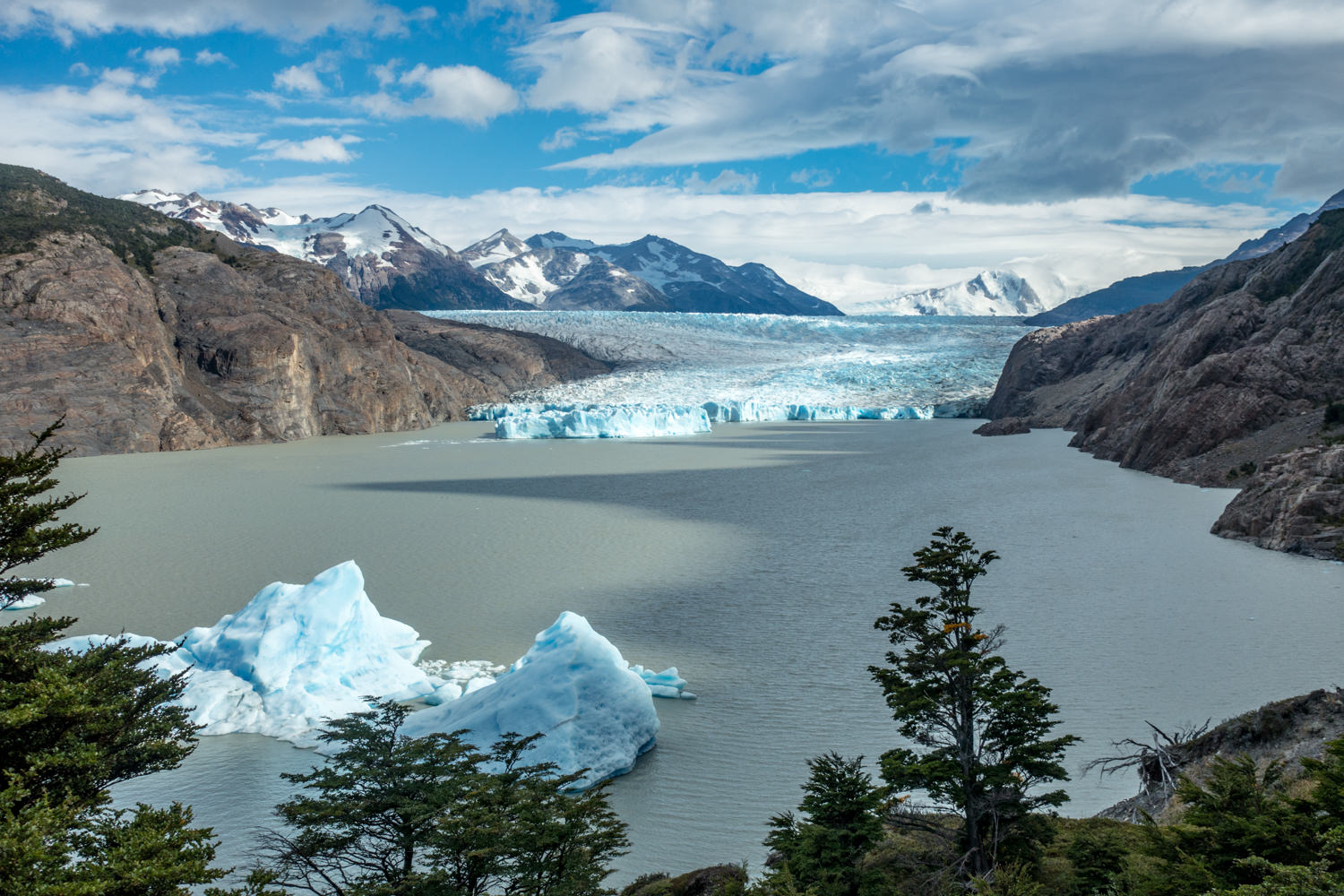
DAY 5: PAINE GRANDE TO ITALIANO (AND OUT & BACK IN VALLE FRANCES)
This day was one of our favorite in Torres del Paine. You’ll start the day with a relatively easy and short hike to Camp Italiano, where you can set up your camp and prepare a day pack for exploring the Valle de Frances. Because this hike is an out and back, you can hike as far as you want in the valley, though we recommend going all the way to Britanico- they views are unreal!
DAY 6: ITALIANO TO CHILENO
DAY 7: CHILENO TO MIRADOR TORRES AND BACK TO CENTRAL
This is the day! You’ll set your alarm for an ungodly hour (4 am for us) and grab your breakfast in the Chileno refugio before beginning your headlamp climb up to the Torres for sunrise. You’ll hike for about an hour on forested trail before you hit the boulder field scramble, which will take another hour. You may have stripped all your layers on the hike up, but once you reach the Torres you’ll want to put them all back on and crawl into your sleeping bag to prepare for the sunrise show (if you’re lucky!) When you’ve taken all the photos you can muster, you’ll turn around and head back to Chileno, pack up your gear, maybe have a celebratory beer, and then head down to Central to finish your O Trek.
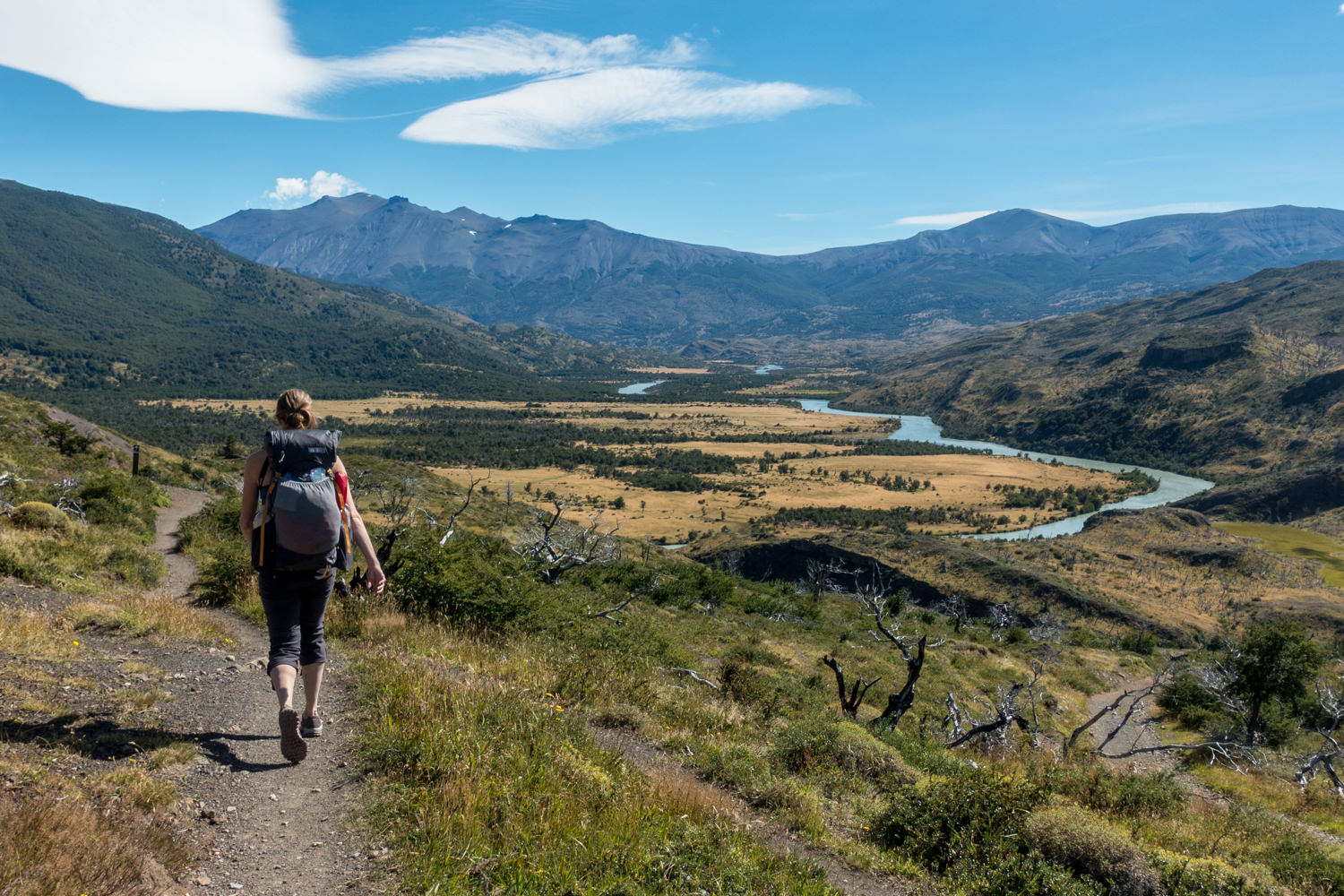
Q TREK ITINERARY
Covering the most trail in Torres del Paine, the Q Trek travels the same route as the O, with an additional day of hiking south of Refugio Paine Grande along Lake Pehoe. Very few hikers cover this additional section so you’ll have some solitude and also earn one of the most spectacular views of the park, the Cordillera Paine rising above Lake Pehoe. You used to be able to begin your hike with the Q portion, leaving from the last bus stop, Administración, and hiking towards Paine Grande.However, now CONAF only allows one-way travel from Paine Grande to Administración, which requires you to end your Torres del Paine hiking there.
Because you have to end your hike with the section from Paine Grande to Administración, we suggest beginning your hike by taking the catamaran to Paine Grande and traveling east around the circuit. That way, you’ll complete the full loop and by the time you return to Paine Grande, you’ll just head south towardsAdministración to complete the Q hike.
WHAT TO PACK
Whether you’re heading out to do the W or O Trek in Torres del Paine or chasing sunrises on Fitz Roy, you’ll want to make sure you have the essential gear you need to be safe and comfortable.
For a complete gear list for backpacking in Torres del Paine, check out our Patagonia Gear Checklist . For more information on general lightweight backpacking gear, check out our CleverHiker Gear Guide . Below is a quick snapshot of our main gear items.
Tent : MSR Hubba Hubba NX
Backpacks : Hyperlite Mountain Gear Southwest 400 and Gossamer Gear Gorilla 40
Sleeping Bags/Quilts : Feathered Friends Egret Nano 20 and Katabatic Flex 22 Quilt
Sleeping Pads: REI Flash Insulated Pad and NEMO Tensor Insulated
Stove: MSR WindBurner Stove System
Hiking Shoes : Saucony Peregrine 8’s
MAPS AND GUIDEBOOKS
When we began planning our trip to Patagonia, we found most of the resources to be grossly outdated, with the existing guidebooks receiving poor reviews. Moon released a new guidebook in the fall of 2017, which we found helpful, but we used a combination of internet resources, maps, and guidebooks to plan our trip.
Moon Patagonia – We used this book heavily in the planning phases of our trip. It offers a nice overview of all the regions and towns. Though there is limited detailed information on specific hiking and backpacking trips, we still found it to be a helpful resource.
Torres del Paine Trekking Map – This waterproof and tear-resistant topographical map includes contour lines, timed trails, shelters, camping and clear information on water sources. Recommended by the National Parks Administration and the National Tourist Service. We used this map everyday on our O Trek.

One of the pleasures of hiking in Patagonia is that you can drink water directly from the source on the trail. On the W Trek, you’ll pass a water source every 30-45 minutes so there’s really no need to carry more than one full water bottle at a time. On the O Trek, you’ll cross water less frequently, but you’ll still cross a source every 45-60 minutes, depending on your pace.
The National Park Service does a really great job at educating visitors on how to use adequate measures to prevent contamination of water sources and keep the water safe for everyone. We still recommend you judge your water source. If there is live stock in the area or if the source runs through a trekking trail, you may be better off waiting for the next source. We brought along Chlorine Dioxide tablets, but never used them.
Travel Insurance
We highly recommend purchasing travel insurance if you plan to trek in Patagonia. Most trekking locations in Patagonia are remote, so if something goes wrong, you’re likely to need an emergency evacuation and that can get insanely expensive.
We did a bunch of research on travel insurance companies and ended up choosing World Nomads for our travels. Their rates were reasonable, their coverage met our needs, and communicating with them was easy. We fortunately didn’t need to use our travel insurance, but the peace of mind alone was well worth it.

Leave No Trace, Rules, & Regulations
Dirty toilet paper is the most common form of backcountry litter we found on the trails in Torres del Paine. When you are unable to use bathroom facilities on the trail, it is essential that you know how to properly dispose of your waste and toilet paper. To dispose of human waste the right way, you need to dig a cathole at least 6-8 inches deep before you go, and if you don’t pack a trowel (we currently use this cheap and lightweight snow stake ), you won’t be able to dig a hole deep enough. It’s as simple as that. After doing your business, either bury your TP deep in the hole, or pack it out in a ziploc bag.
You love nature. That’s why you’re out there. So educate yourself on Leave No Trace principles and help us keep our wild spaces beautiful for generations to come.
CONSIDER GIVING BACK
Patagonia, and more specifically, Torres del Paine is one of the last truly wild and remote spaces. At CleverHiker we encourage people to get out and experience nature at it’s finest and that mission comes with a great responsibility. If you were lucky enough to experience the breathtaking beauty of Torres del Paine, we encourage you to give what you can to continued conservation efforts. We all need to be stewards of the natural world to protect our wilderness for generations to come.
We’ve donated to the Torres del Paine Legacy Fund , which works to preserve and restore ecosystems, improve tourist infrastructure by mitigating visitor impacts, promotes community development, and diversifies recreational activities. The best part? 100% of your donation will directly support sustainability actions in Torres del Paine.
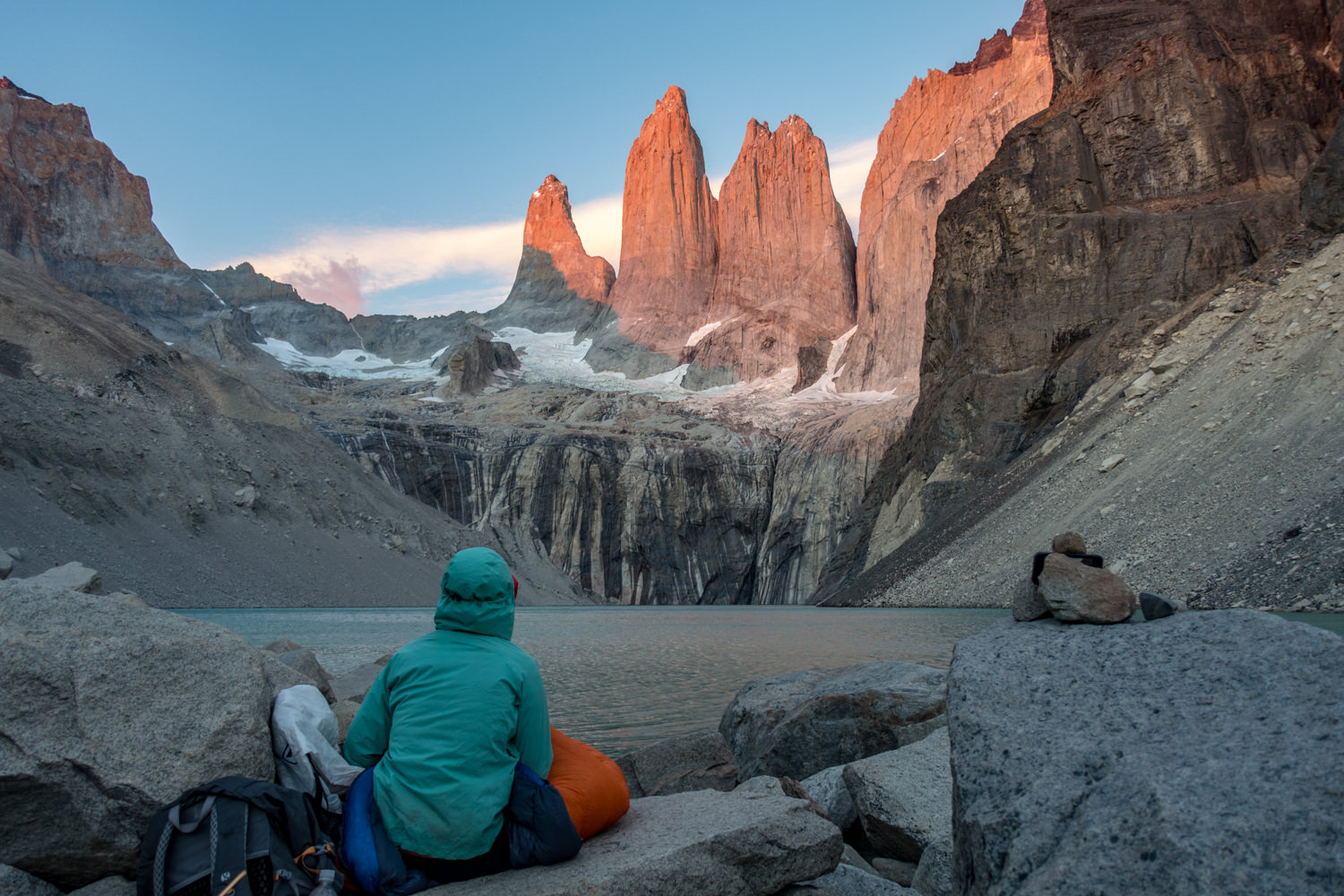
more information
Hopefully you found this guide helpful for planning your trip to Torres del Paine.For more helpful resources check out the links below.
CleverHiker Top Gear Awards
Essential Trail Skills Video Series
Lightweight Gear Basics Video Series
Disclosure: Some of the links on this page are affiliate links, which means we may receive a small commission if purchases are made through those links. This adds no cost to our readers and helps us keep our site up and running. Our reputation is our most important asset, which is why we only provide completely honest and unbiased recommendations.

Itineraries & Pricing
Confirmed by the National Park as of May 2023.
There are two catamaran departure ports:
PUDETO: Located on Lake Pehoe, with access from the main road.
PAINE GRANDE: Mountain Refuge (Vertice Patagonia) in Circuito W.

Itinerary (Route)
Pudeto < --- > paine grande duration: 30 minutes.
PAINE GRANDE
MAY to August 2023
Special departures, Monday, Wednesday and Friday, subject to a minimum of 15 passengers.
December to March
Schedules and Rates will be published promptly
* All departures are conditioned to the weather conditions of thetime of departure.
Prices Winter 2023
These are the confirmed prices for Winter 2023

This rates are for winter 2023 only
Chileans : (National)
$ 25,000 Pesos
Foreign : (International) U$D 30 (American Dollars)
Summer Rates
No reservation required.
The transportation service does NOT require prior reservation. You just need to arrive, pay in cash and you will be transported.
Lake Pehoe >> Paine Grande
The service must be paid at the time before seizing in Cash.
Cash payment
Boarding 30 minutes before.
Must arrive at least 30 minutes before departure
No one stays behind
If the ship's maximum capacity is reached, a second trip will be made immediately.
Would you like a private trip?
For those who would like a private trip, outside the official sailing schedules, just contact us and we will send you the rates "charter".
- National Turists
- Our Campings
- Our Mountain Hostels
- Torres del Paine
W Express Circuit
Adventure is calling .
Choose between Camping or Mountain Hostel
Portada » Circuitos de Trekking » W Circuit Express
One of the best hikes in the world
Be prepared to fall in love with Chile’s Patagonia. The pictures speak for themselves but could never do justice to the sights, feelings, excitement and pure awe that you will experience while hiking the W Circuit. Hiking through unbelievably big mountains, deep valleys, and dense, mysterious forests will leave you grateful for life and the exact moment you’re living.
The W Circuit is the most popular hike in Torres del Paine National Park for a reason – it’s stocked with all the highlights including Base Las Torres, Los Cuernos Mountains, Francés Valley, Paine Grande and Grey Glacier . You can choose your adventure style, from camping immersed in nature to full room and board in shared mountain hostels or private hotel rooms. While still remaining a physically and mentally demanding experience, the W Circuit offers luxuries like comfy beds, hot showers, warm, hearty meals, and stock-up points along the way.
The W Circuit gets its name from the way it starts at one end of the Park, winds up and back down two spectacular mountain valleys, and then comes to a close at the other end, forming a W from a bird’s eye view.
The 4 day/3 night W Circuit Express option starts early on the first day and involves hiking to the Base Las Torres Lookout the same day of arrival to Park. If you’re on a tight schedule but don’t want to miss anything, this hike is for you.
What will you see?
Amongst the most famous mountains in the world, these three towering, granite peaks soar in the blue sky at 2850m / 9350ft, 2800m / 9200ft, and 2600m / 8500ft. Molded by pure glacial force, these are the breath-taking towers that give the Park its name.
Los Cuernos
These three mountains put up a fight with the Las Torres Mountains over prettiest in the Park. Standing at 2600m / 8500ft, 2400m / 7900ft and 2200m / 7200ft, the different types of rocks that make up this massif create a stark, beautiful, and multi-colored contrast. A 700m / 3000ft wide slab of granite crosses the middle of these uniquely shaped mountains.
Francés Valley
This lookout in the middle of the W Circuit boasts unmatchable views. To the west, you can gaze at the Cuernos, Espada, Hoja and Máscara mountains. To the east, the Francés Glacier overhangs Mount Paine Grande. To the north, the jagged Fortaleza and Aleta de Tiburón (shark’s fin) peaks stand out against the sky. As if that wasn’t enough, the valley is immersed in a Nothofagus forest filled with many species of trees and vegetation that produce a variety of flowers and change colors during autumn.
Paine Grande
Made up of four summits, Paine Grande is recognized as one of the most beautiful mountains in the world. The highest peak towers at 3050m / 10000ft, making it the tallest mountain in the Macizo Paine Range and also the technically hardest mountain to climb in the entire Torres del Paine National Park.
Glaciar Grey
This is the largest glacier in Torres del Paine National Park, measuring 6km / 4mi wide, 30m / 100ft tall and 19km / 12mi long. Its floating icebergs and glacial moraines are just as picturesque as the glacier itself, which tumbles down from the massive Southern Ice Field.
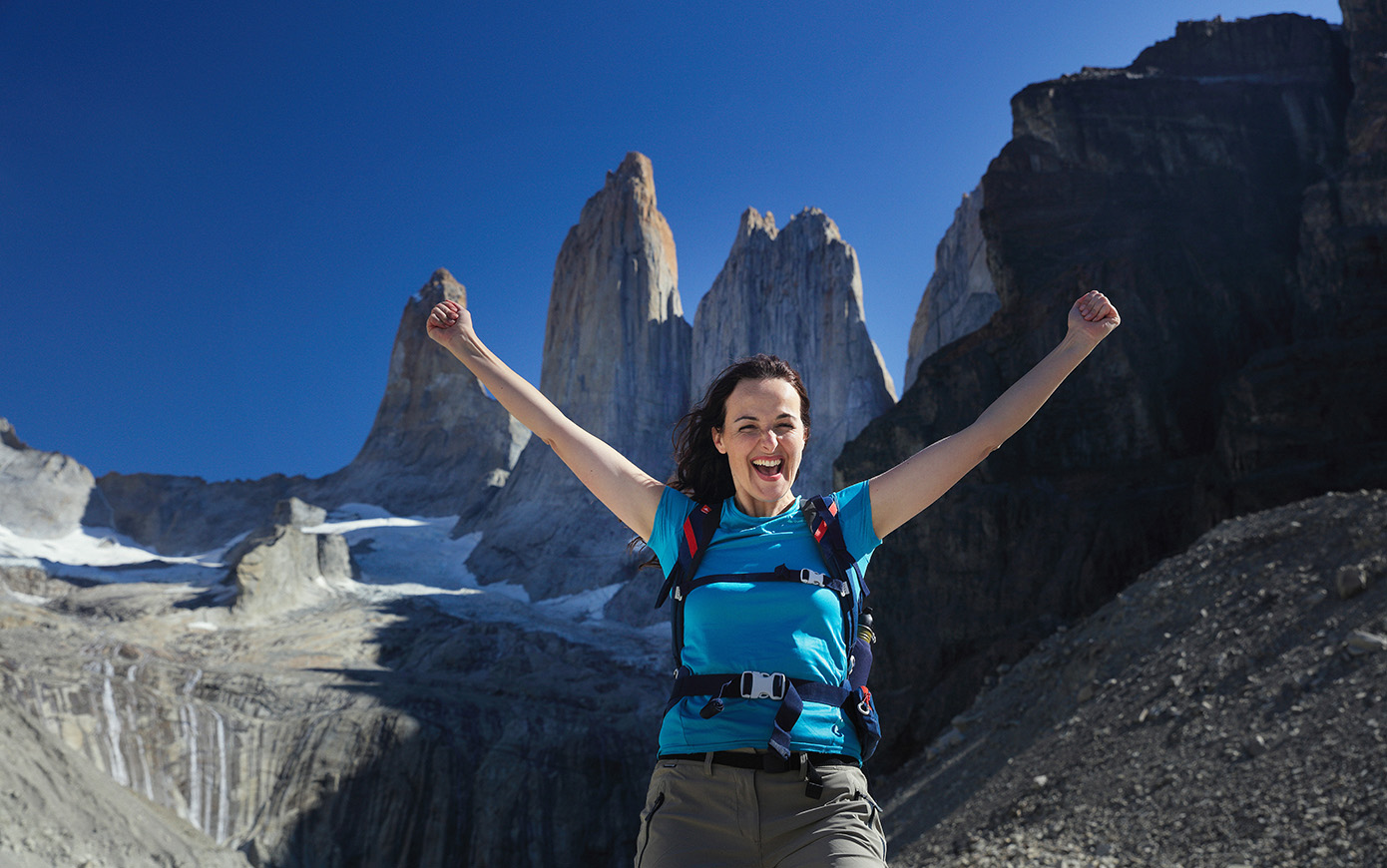
How is the Circuit?
What does it include.
- Premium Camping - Fully Equipped
- Mountain Hostel
- RESERVATION AND CANCELLATION POLICY
Premium Camping - Fully Equipped Experience
Day 1 : Regular Transportation from Puerto Natales to Torres del Paine, hike to Las Torres Base, lodging at Central Sector. Day 2 : Hiking to Francés Sector (o Cuernos), lodging Francés Sector Day 3 : Hike to the Francés Valley, lodging at Francés Sector. Day 4 : Hike to Grey Glaciar first Lookout Point, then cross Pehoé Lake in *catamaran and take transport back to Puerto Natales from Torres del Paine on Regular Transportation
Based on double occupancy – 2 people, 1 tent:
- USD $ 945 p/p
Single Suplement:
- The published rates and dates are valid from October 2023 until april 2024.
- If you would like this option with a group, please book through the form at the bottom of this page.
- During Christmas Eve and New Years Eve an extra of USD $40 is charged per dinner.
- Food service is limited in capacity
- If you wish to book this program with a private guide, complete the form at the bottom of this page.
- *Lake Pehoé catamaran may be subject to changes, which could include modifications in the itinerary, in that case we will help you find the best alternative
- For this program, it is essential to arrange accommodation in Puerto Natales for the night before the circuit begins and also for the final night.
- 1 4 day Epic Trekking Circuit
- 2 3 nights in Fully Equipped Camping (Tent, sleeping bag, and sleeping mat)
- 3 All Meals
- 4 Transport to and from Puerto Natales to Torres del Paine National Park
- 5 Catamaran from Paine Grande
- 6 Park Entrance Fee
- 7 A hike of a lifetime
Mountain Hostel Experience
Day 1 : Transportation to Torres del Paine, hike to Las Torres Base, lodging at Central Sector. Day 2 : Hiking to Francés Sector, lodging Francés Sector Day 3 : Hike to the Francés Valley, lodging at Francés Sector. Day 4 : Hike to Grey Glaciar first Lookout Point, then cross Pehoe Lake in *catamaran and take transport back to Puerto Natales.
Based on 6 people per room:
- USD $ 1,265 p/p
- Each room has 6 beds available.
- Mountain Hostel: Each room has 6 beds.
- French Domes: Each room has 8 beds.
- 1 4 day Epic Trelkking Circuit
- 2 3 nights in Mountain Hostel
- Prices valid until April 2024.
- Prices in USD are for foreign tourists only.
- If you would like to read our Reservation and Cancelation Policy please click here .
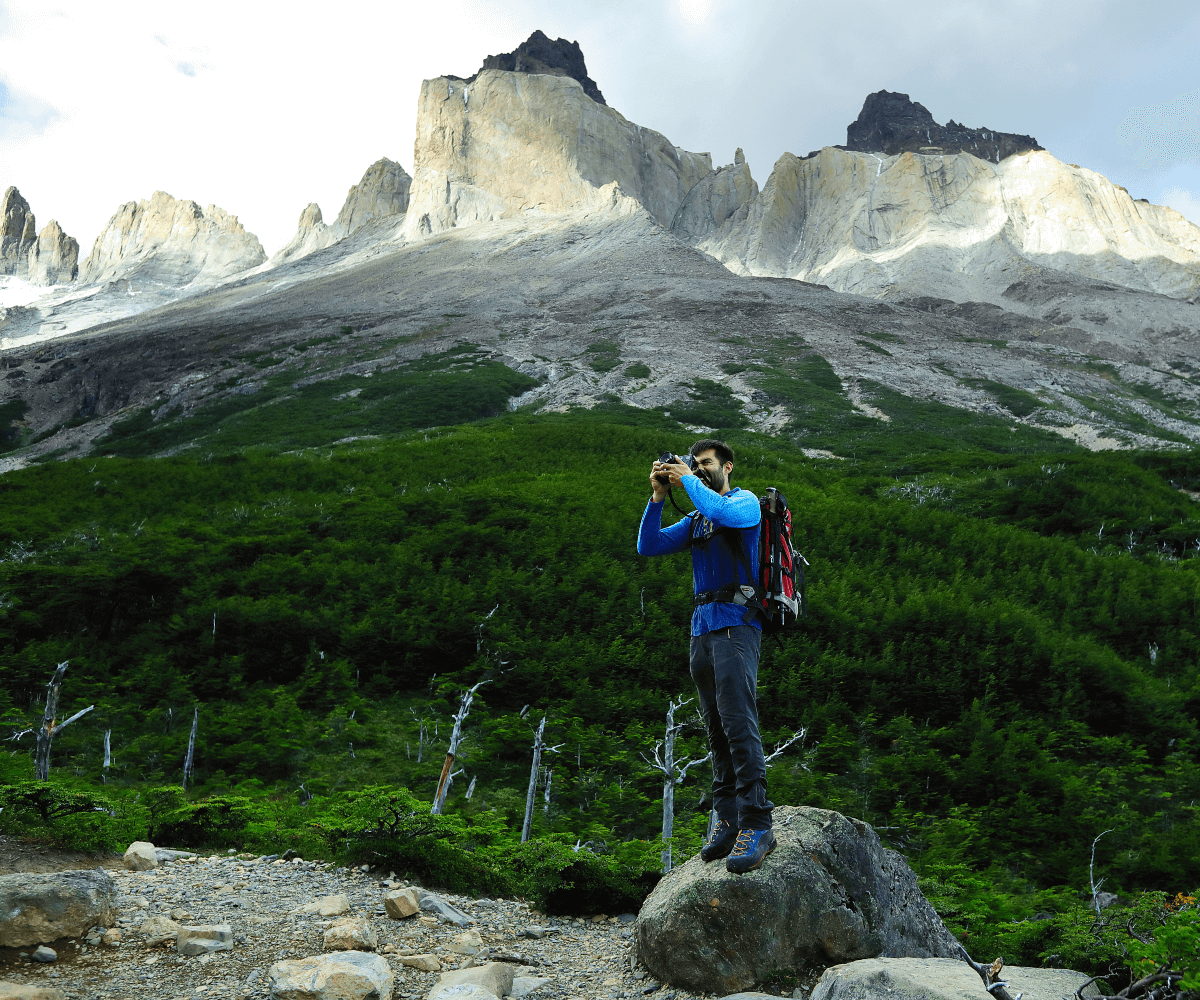
Make an inquiry or a Reservation Here
Other circuits you might be interested in, w classic circuit from usd $1,180, las torres base circuit 3d/2n from $750 usd.
Las Torres Patagonia

Gracias por contactarte con Reserva Las Torres Patagonia
Spanish to Go
Catamaran Lago Pehoe in Spanish
How to say catamaran lago pehoe in spanish, introduction, pronunciation, additional tips.
Ejercicios Perifrasis De Infinitivo
Practice your Spanish skills with basic quizzes. Test yourself and improve your knowledge with free questions. Enjoy basic quizzes with illustrations and more.
Basic Quizzes
Start learning basic Spanish vocabulary with words and phrases, with pictures, videos, and audio. Study basic terms in Spanish like a professional.
Basic Spanish
What are the most popular conjugated verbs in Spanish? Learn the conjugation of Spanish verbs. Study Spanish verb tenses with online lessons and examples. Find out which are the most popular verbs.
Conjugated Verbs in Spanish
Do you think you know about conjugations in Spanish? Practice your Spanish skills with conjugation quizzes. Improve your knowledge with free lessons and quizzes.
Conjugation Quizzes
Learn the Spanish words and phrases with flipbooks. Flip to learn the basic Spanish vocabulary online for free. Study the Spanish language by using a flipbook, choose your favorite ebooks, and flip.
Learn basic Spanish with flashcards. Study Spanish online with helpful lessons and articles including pictures, audio, and more.
Spanish Flashcards
Learn basic Spanish verbs with flip cards. Touch and flip. Study Spanish online with helpful lessons and articles including pictures, audio, and more.
Spanish Flip Cards
Learn Spanish for advanced level. Start learning Spanish words and phrases with free online lessons, and helpful articles. Study some Spanish terms and their rules. Learn the second language like a pro.
Spanish for Advanced
Spanish words that start with . Start learning Spanish words and phrases with online lessons, and helpful articles. Study some Spanish terms and their rules. Learn the second language like a pro.
Spanish Words that Start with
Learn Spanish for intermediate level. Study the Spanish grammar rulers. Enjoy helpful tips about how to use the Spanish grammar.
Spanish for Intermediate
Leave a reply.
You must be logged in to post a comment.

‘Total Disgrace’: Anger, Frustration as Mass Heating Failures Across Russia Leave Thousands in the Cold
P ODOLSK, Moscow region – Residents throughout Russia affected by unprecedented winter heating outages in recent days have expressed their frustration and urged local authorities to restore heating in their homes.
In Podolsk, a town some 30 kilometers south of the capital Moscow, at least 149,000 residents — nearly half of its population — were left without heating when a heating main burst at a nearby private ammunition plant.
“It’s a total disgrace. There is no heating and no hot water. We have to sleep in sleeping bags,” Yuri, a local resident, told The Moscow Times.
“I have no words to describe how bad the situation is," said Yuri, who declined to provide his surname. "We have had no heating for almost six days."
Heating issues have affected residents in the Moscow region, where temperatures have plunged to as low as minus 20 degrees Celsius in the past week, as well as people in the Far East Primorye region , the cities of Moscow and St. Petersburg , Penza , the southern Voronezh and Volgograd regions and more.
In the Tver region, a group of residents filmed an appeal to President Vladimir Putin, saying that they “are freezing from the cold” in the village of Novozavidovsky.
“We're literally being killed by the cold,” a woman in the video said, adding that they have been sending requests to local authorities since September after their houses were connected to a boiler room whose power was reportedly insufficient.
“This is some kind of torture and extermination of the population 100 kilometers from Moscow,” she added.
Residents of the Moscow region town of Elektrostal lit a fire in the street to draw the authorities’ attention to the heating problem.
“It’s impossible to stay in our houses. We're freezing!” a group of women in the video said.
Suffering from subzero temperatures, residents are placing the blame on local authorities and utility services for failing to take necessary precautions and not taking action to resolve the situation.
“We are sending complaints everywhere but no one listens to us. We have portable heaters working in every room, but the temperature inside is still 10 degrees Celsius,” Yelena from Podolsk said.
“There is a clinic and a hospital, as well as kindergartens, where there is no heating. And we have no answers, no assistance, no explanation,” Yelena added.
Podolsk authorities opened temporary heating centers and declared a state of emergency.
Local authorities linked the heating problems to the fact that the town is heated by a boiler plant owned by the Klimovsk Specialized Ammunition Plant, a private ammunition factory and one of the largest weapon cartridge production enterprises in the country.
“The facility is under tight security conditions, which limits our ability to oversee winter preparations,” the Moscow region’s Vice Governor Yevgeny Khromushin said last week. “We were unaware of the problem for nearly a day.”
An unidentified Moscow region official and two senior executives at the plant were arrested on suspicion of providing unsafe services, Russia’s Investigative Committee, which probes major crimes, said in a statement Tuesday.
Investigators said that Podolsk’s deputy mayor was accused of misusing authority by issuing a readiness certificate for the boiler house at the plant.
In the neighboring Tver region, the authorities opened a criminal case over the laundering of over 84 million rubles ($938,993) in heating bills paid by residents, the Astra Telegram channel reported this week, citing unidentified sources. According to investigators, the heads of the local water intake and boiler house misappropriated the heating payments for personal use.
Reacting to the heating failures, Putin on Tuesday asked Emergency Situations Minister Alexander Kurenkov to provide heat and electricity to the affected residents.
The outages appear to be the latest effect of several decades of crumbling infrastructure in Russia which have been linked to endemic corruption and mismanagement.
The overall decay of Russia's municipal infrastructure surpassed 70% in 2022, the pro-Kremlin newspaper Izvestia reported .
According to Sergei Pakhomov, head of the State Duma’s Construction, Housing and Utilities Committee, water pipes that were 90 years old or even older were still in use as recently as two years ago in some cases.
Housing, utilities and communal services are a common source of problems for Russians during the winter.
In St. Petersburg, residents regularly complain about extensive ice coverage on city streets and sidewalks, with many people ending up in the hospital over the years due to slipping and falling accidents.
In the Siberian republic of Khakassia, two villages were left without electricity last month due to apparent issues with outdated communication systems.
In the winter of 2020, five people in the Perm region were killed after a pipe burst.
When asked about the latest heating outages, Kremlin spokesman Dmitry Peskov acknowledged the problems and linked them to poor municipal infrastructure, saying that people “had to endure a lot of inconvenience in the cold and without electricity.”
"Despite all the titanic efforts to update all housing and communal services systems, there's still a certain part that remains considerably deteriorated. These programs will continue, but it is impossible to update all pipes and all housing and communal services systems in 10-15 years,” Peskov said.
As for now, residents affected by heating issues appear to lack optimism that the problems will be solved efficiently.
"It's been a week since we've had heating, and the temperature in my apartment is around 11 degrees Celsius,” Podolsk resident Lidiya told The Moscow Times.
“Unfortunately, no one knows when it will be repaired,” she added.

Electrostal History and Art Museum

Most Recent: Reviews ordered by most recent publish date in descending order.
Detailed Reviews: Reviews ordered by recency and descriptiveness of user-identified themes such as wait time, length of visit, general tips, and location information.
Electrostal History and Art Museum - All You Need to Know BEFORE You Go (2024)
- (0.19 mi) Elektrostal Hotel
- (1.21 mi) Yakor Hotel
- (1.27 mi) Mini Hotel Banifatsiy
- (1.18 mi) Elemash
- (1.36 mi) Hotel Djaz
- (0.07 mi) Prima Bolshogo
- (0.13 mi) Makecoffee
- (0.25 mi) Amsterdam Moments
- (0.25 mi) Pechka
- (0.26 mi) Mazhor

IMAGES
VIDEO
COMMENTS
Somos parte del Circuito W. Nuestra navegación hoy en día es reconocida por sus estándares de seguridad, así como el servicio entregado. Contamos con un catamarán de características idóneas para navegar el Lago Nordenskold en diferentes tipos de climas y situaciones.
The Torres del Paine catamaran ferry service operates between the Pudeto Jetty, which is more or less in the heart of the Park, beside Pehoe Lake; and Refugio Paine Grande. However, this is NOT the catamaran that operates to see Glacier Grey - so do not be confused by this. THAT catamaran departs from Hotel Grey, way over in the western arm ...
Pehoe Lake Catamaran Navigation. October to April. If you cancel your booking until 3 days before the beginning of the activity, we will refund 100% of the advance you paid for the booking. Free cancellation. You can reschedule your booking without any additional cost until 3 days before the beginning of the activiity.
Operated Between Pudeto Jetty and Refugio Paine Grande Across Pehoe Lake. This service is subject to local weather conditions and can be delayed or cancelled. Most importantly, reservations are NOT taken in advance. ... Catamaran Departure Times 2021 - 2022 The crossing takes about 25 minutes From Pudeto From Pudeto; 01 Sep to 15 Sep: 11.00am ...
3 días. Reserva la Navegación Lago Pehoé con nosotros y asegúrate un espacio en el catamarán que hace un recorrido de 30 minutos entre el sector Pudeto y el sector Paine Grande (y viceversa), con vistas impresionantes del Macizo Paine y los Cuernos del Paine, si el clima lo permite. De esta manera, podrás realizar tus actividades dentro ...
Do you want to explore the stunning scenery of Torres del Paine National Park? Hipsur offers you the best navigation service on Lake Pehoe, connecting Pudeto and Paine Grande in 30 minutes. Check the schedule and prices of our catamaran trips and book your adventure now.
Ominous weather on Torres del Paine's 'O' Circuit. In short, the 'O' Circuit is a 126-kilometer loop around the scenic Cordillera del Paine mountains within Patagonia's Torres del Paine National Park. The trail includes the famous 'W' Circuit (67 km), and wraps around the backside of the spectacular mountain range, eventually ...
Catamaran trip to Paine Grande. At 10:30 am you will board the Hielos Patagónicos catamaran, which will sail for approximately 35 minutes through the Pehoé lake, arriving directly to the Paine Grande refuge. Hike to Refugio Gray. Here starts your hike to Grey. The journey begins through a narrow and winding valley that leads to Los Patos lagoon.
Lago Pehoe sits at the centre of Torres del Paine National Park, and from it you have wonderful views of the Paine Grande mountain and the Cuernos (horns) del Paine. Pehoe is a tehuelche word meaning 'hidden' and is pronounced "pay-oh-way". On its northwestern shore lies Refugio Paine Grande, one of the key paces to spend a night on the W Trek .
Av. San José María Escrivá de Balaguer 13.105, Oficina 717 Lo Barnechea - Santiago - Chile
Most trekking itineraries, both guided and self-guided, for Torres del Paine include an exciting boat ride by a catamaran crossing Lake Pehoe. If it is included, the fare will be taken care of. If you have not booked a tour which includes transportation, expect to pay about 40 USD for a ticket. Mind that this needs to be paid in Chilean Pesos.
According to the Bus Sur link below, on December 1 they offer a 12:30 bus from Pudeto to Puerto Natales and also an 18:30 bus from Pudeto to Puerto Natales. You could use the 11:35 catamaran from Paine Grande to Pudeto and connect with the 12:30 Bus Sur bus or use the 17:00 catamaran from Paine Grande to Pudeto and connect with the 18:30 Bus ...
catamaran, Lodge Paine Grande, Navigation, Pudeto, schedule, Torres del Paine. LAKE PEHOE NAVIGATION SCHEDULE 2019-2020 BY HIELOS PATAGONICOS CATAMARAN (PUDETO - LODGE PAINE GRANDE) UPDATED. Time Schedule. Departure from Pudeto (access by car or bus) Departure from Lodge Paine Grande (trek) September 01 to October 31. 11:00.
From here, you'll take the Catamaran across Lago Pehoe to Refugio Paine Grande. Reservations are not taken in advance. You need to organize your crossing directly at Pudeto. The journey takes about 20 minutes. Current price for the cost is $40 USD per person one way.
Itineraries & Pricing. Confirmed by the National Park as of May 2023. There are two catamaran departure ports: PUDETO: Located on Lake Pehoe, with access from the main road. PAINE GRANDE: Mountain Refuge (Vertice Patagonia) in Circuito W.
Once in the National Park, you'll take the catamaran across Lake Pehoe to the starting point of today's return trek. Your destination, the French Valley, is a glacial moraine surrounded by peaks and hanging glaciers - you'll hike over challenging terrain and catch your first sight of the hanging glacier atop the valley.
Day 4: Hike to Grey Glaciar first Lookout Point, then cross Pehoe Lake in *catamaran and take transport back to Puerto Natales. Based on 6 people per room: USD $ 1,265 p/p; Note: The published rates and dates are valid from October 2023 until april 2024. Each room has 6 beds available. Mountain Hostel: Each room has 6 beds.
The Catamaran Lago Pehoe is a popular tourist attraction nestled in the heart of Patagonia, Chile. Boasting breathtaking views of the pristine Lago Pehoe, this catamaran offers visitors a unique and unforgettable experience. If you plan on visiting this enchanting destination, it is useful to know how to say "Catamaran Lago Pehoe" in ...
Glowzone Jamestown-Scotland Ferry Stavros Beach Sandy Beach Park SeaQuest Woodbridge Colombo City Centre Burton Brooks Peach Orchard Valley of the Temples Hoomaluhia Botanical Gardens Enchanted Forest Phong Nha Cave And Dark Cave Tour 3D Fun Art Museum Funchal Grand Cayman Catamaran Cruise with Snorkeling at Stingray Sandbar and Reef North ...
B right flashes lit up the night sky in southern Moscow in the early hours of Thursday morning, new footage appears to show, following reports of an explosion at an electrical substation on the ...
PODOLSK, Moscow region - Residents throughout Russia affected by unprecedented winter heating outages in recent days have expressed their frustration and urged local authorities to restore ...
Tortuga Island Anhinga Trail Le Bois de Boulogne TRM - Thika Road Mall Hungarian State Opera House (Magyar Allami Operahaz) Museu de la Xocolata Trenitalia Frecciarossa Alligator Alley Old Arcade Small-group Milan Highlights e-Bike Tour SoHo, Little Italy, and Chinatown Walking Tour in New York Sri Lanka Tour, Kandy to Ella by Tuk-tuk and Train Nordnes Walking Tour: Bergen's History & Charming ...